1. Enhancing Speed and Efficiency
In the fast-paced world of journalism, time is of the essence. AI has revolutionized the way news is written, enhancing speed and efficiency to unprecedented levels. One of the significant advantages of AI in news writing is its ability to generate articles rapidly. Traditional news writing methods require extensive research, interviews, and meticulous fact-checking. AI algorithms, on the other hand, can scan through vast amounts of data within seconds, extracting relevant information and crafting coherent news pieces.
2. Examples of AI-Powered News Writing:
Several media outlets have already adopted AI-generated content in their workflow. For instance, the Associated Press uses AI to create financial reports. The technology combs through quarterly earnings reports, extracts crucial data points, and compiles them into comprehensive news stories. Similarly, Forbes utilizes an AI tool named "Bertie" to assist its journalists. Bertie suggests sentence structures and recommends relevant data, enabling writers to focus more on analysis and less on the initial drafting process.
3. Tips for Effective Implementation:
Implementing AI in news writing requires a strategic approach. Here are some tips for effective integration:
A. Understand the Technology: Journalists and news organizations should invest time in understanding the AI tools they plan to use. Familiarity with the technology ensures that journalists can leverage its full potential.
B. Combine AI with Human Expertise: While AI can expedite the writing process, human expertise is invaluable. Journalists should use AI as a tool to enhance their work, combining the efficiency of machines with the intuition and analysis of humans.
C. Customize AI Tools: AI solutions are not one-size-fits-all. News organizations should customize AI tools according to their specific requirements. Tailoring the algorithms to address the unique needs of a publication can significantly improve the quality of generated content.
D. Ethical Considerations: Journalists must consider the ethical implications of AI-generated content. Fact-checking, source verification, and maintaining editorial standards are crucial even when AI is involved in the writing process.
4. Case Studies:
Case Study 1: The Washington Post's "Heliograf"
The Washington Post introduced "Heliograf," an AI-powered tool that generates automated stories. During the 2016 Rio Olympics, Heliograf produced updates, summaries, and medal tallies in real-time. This allowed The Washington Post to cover a vast event comprehensively, providing readers with up-to-the-minute information.
Case Study 2: BBC's "Juicer"
BBC utilizes an AI tool called "Juicer" to sift through social media posts and identify breaking news stories. Juicer analyzes trending topics, hashtags, and user engagement to determine the most relevant and impactful news events. This technology enables BBC journalists to stay ahead in the competitive world of digital news reporting.
Incorporating AI into the newsroom has undoubtedly reshaped the landscape of journalism. As we continue to advance technologically, finding the delicate balance between artificial intelligence and human creativity will be key to ensuring that news remains not just fast and efficient, but also accurate, insightful, and ethical.
2. Speed and Efficiency
In the world of financial markets, the use of algorithmic trading has been on the rise in recent years. Algorithmic trading refers to the use of computer programs to execute trades in financial markets. One of the most significant benefits of algorithmic trading is speed and efficiency. In this section, we will explore the benefits of algorithmic trading in more detail.
1. Speed:
One of the primary advantages of algorithmic trading is its speed. With computer programs executing trades, algorithms can process information and react to market changes much faster than a human trader. This speed advantage is crucial in markets where prices can change rapidly in a matter of seconds. For example, high-frequency trading (HFT) firms use algorithmic trading to execute trades in microseconds, allowing them to take advantage of small price movements that human traders would miss.
2. Efficiency:
Another benefit of algorithmic trading is its efficiency. With algorithms executing trades, the risk of human error is reduced, and trades can be executed with greater precision. This efficiency can also lead to cost savings, as algorithmic trading can reduce the need for human traders, who may require higher salaries and benefits.
3. Access to information:
Algorithmic trading can also provide access to a vast amount of market information that would be challenging for a human trader to process. Algorithms can analyze vast amounts of data and identify patterns that may not be apparent to a human trader. This analysis can help traders make more informed trading decisions.
4. Backtesting:
Another advantage of algorithmic trading is the ability to backtest trading strategies. Backtesting involves testing a trading strategy using historical market data to see how it would have performed in the past. This analysis can help traders refine their strategies and identify potential weaknesses before putting them into practice.
5. Risk management:
Algorithmic trading can also assist in risk management. Algorithms can be programmed to monitor market conditions and adjust trades accordingly. For example, if a stock price falls below a certain threshold, an algorithm can be programmed to sell the stock automatically to limit losses.
Algorithmic trading provides several benefits, including speed, efficiency, access to information, backtesting, and risk management. While there are some concerns about the impact of algorithmic trading on market volatility and fairness, the benefits of algorithmic trading cannot be ignored. For traders looking to take advantage of market opportunities quickly and efficiently, algorithmic trading is a valuable tool.
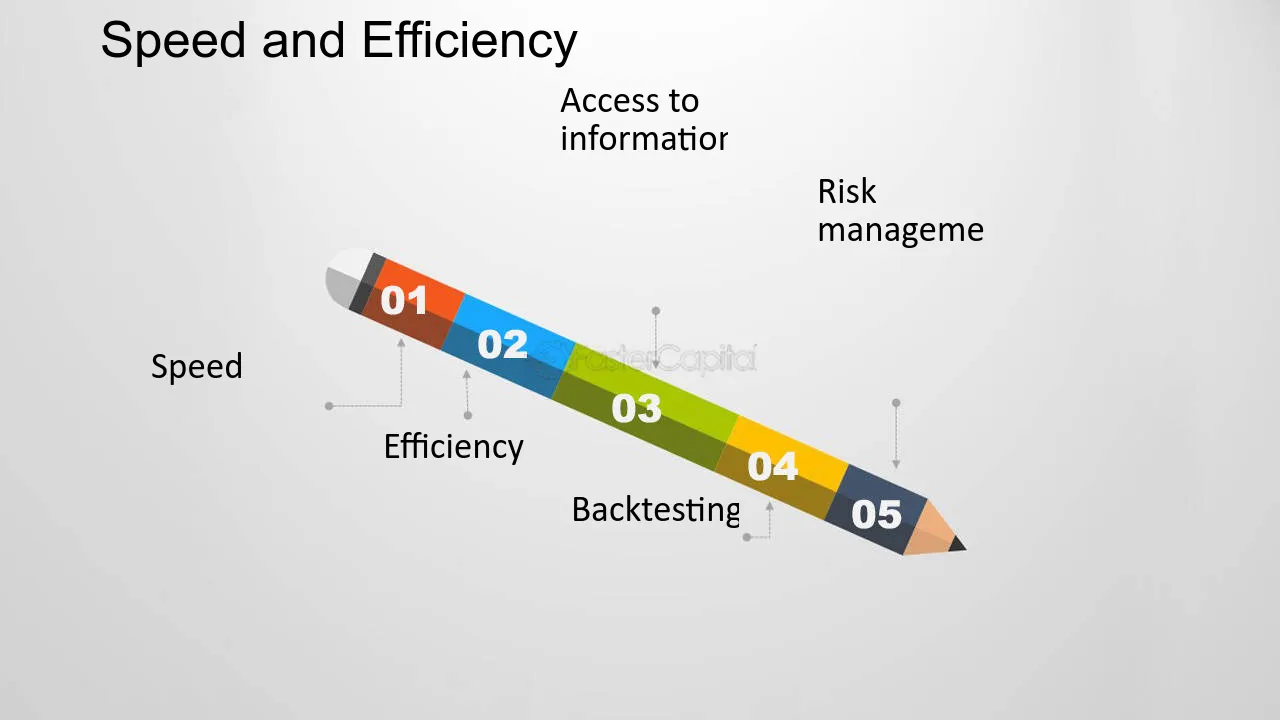
Speed and Efficiency - Algorithmic Trading: The Future of Bourse Transactions
3. Ensuring Speed and Efficiency
Performance optimization is a crucial aspect of app design that directly impacts the user experience. It involves ensuring that the app runs smoothly, loads quickly, and operates efficiently on different devices and network conditions. In today's fast-paced digital world, users have high expectations when it comes to app performance, and any delays or lag can lead to frustration and abandonment of the app. Therefore, it is essential for app designers to prioritize performance optimization to ensure speed and efficiency.
From a user's perspective, a fast and responsive app is a delight to use. It allows them to accomplish their tasks quickly and efficiently, enhancing their overall experience. On the other hand, a sluggish app with long loading times and frequent freezes can be a major turn-off. Users are likely to abandon such apps and look for alternatives that provide a smoother experience. Therefore, performance optimization is not just a technical concern; it has a direct impact on user satisfaction and the success of the app.
1. Minimize network requests: One of the primary factors that affect app performance is the number of network requests made by the app. Each request introduces latency, and multiple requests can significantly slow down the app's performance. To optimize performance, designers should minimize the number of network requests by combining multiple requests into a single request or caching data locally to reduce the need for frequent requests. For example, instead of making separate API calls for different data sets, designers can combine them into a single call and fetch all the required data in one go.
2. Optimize images and media: Images and media files can often be large in size, leading to longer loading times and increased bandwidth usage. Designers should optimize images by compressing them without compromising the visual quality. They can also use lazy loading techniques to load images as they become visible on the screen, rather than loading all the images at once. Additionally, designers should consider using responsive images that adapt to different screen sizes and resolutions, reducing the amount of data required to be downloaded.
3. Implement efficient algorithms and data structures: The efficiency of the underlying algorithms and data structures used in the app can have a significant impact on its performance. Designers should carefully select and implement algorithms that are optimized for speed and efficiency. For example, when dealing with large datasets, using a hash table for quick data lookup can be more efficient than a linear search algorithm. Similarly, choosing the right data structure, such as a balanced tree, can improve the performance of operations like sorting and searching.
4. Opt for native code when necessary: While cross-platform frameworks and technologies offer convenience and ease of development, they may not always provide the best performance. In cases where performance is critical, designers should consider using native code for certain components or functionalities. Native code can take advantage of the device's hardware capabilities and optimize performance. For example, using native code for graphics-intensive tasks like rendering complex animations can result in smoother and faster performance compared to using cross-platform solutions.
5. Continuously monitor and optimize: Performance optimization is an ongoing process that requires continuous monitoring and optimization. Designers should regularly analyze app performance metrics, identify bottlenecks, and make necessary improvements. They can use tools like performance profiling and monitoring to identify areas that need optimization. It is also important to consider user feedback and address any performance-related issues reported by users promptly.
Performance optimization is a critical aspect of app design that directly impacts user experience and the success of an app. By minimizing network requests, optimizing images and media, implementing efficient algorithms and data structures, considering native code when necessary, and continuously monitoring and optimizing, designers can ensure speed and efficiency in their apps. Prioritizing performance optimization will not only enhance user satisfaction but also contribute to the overall success of the app.
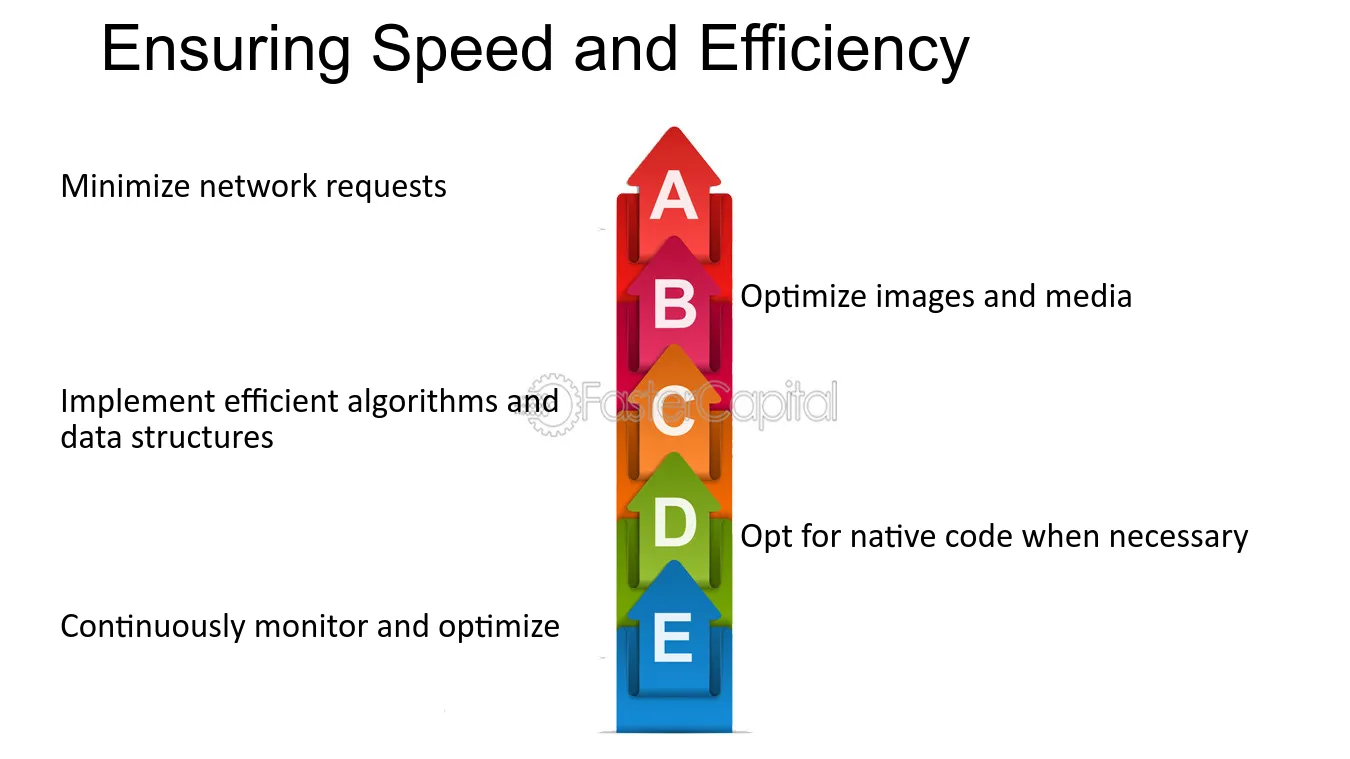
Ensuring Speed and Efficiency - App Design: Designing for Success: AAP s Guide to Exceptional App Design
4. Increased Speed and Efficiency
In today's fast-paced business environment, startups need to be agile and responsive to market demands. Collaboration enables startups to operate at a faster pace and achieve greater efficiency by leveraging the strengths and resources of their collaborators.
Benefits of collaboration for startups in terms of increased speed and efficiency include:
1. Resource optimization: Collaboration allows startups to optimize the allocation of their resources by leveraging the resources of their collaborators. This results in faster and more efficient operations, as startups can focus on their core competencies while relying on others for complementary tasks.
2. Streamlined processes: Collaboration often involves streamlining processes and eliminating redundancies. By working together, startups and their collaborators can identify bottlenecks, optimize workflows, and improve overall efficiency.
3. Shared workload: Collaboration enables startups to share the workload with their collaborators, ensuring that tasks are completed more quickly and efficiently. This shared responsibility allows startups to leverage the expertise and capacity of others, leading to faster turnaround times.
4. Agile decision making: Collaboration facilitates agile decision making by involving multiple individuals in the decision-making process. This allows startups to make decisions more quickly, adapt to changing market conditions, and seize opportunities in a timely manner.
A notable example of collaboration leading to increased speed and efficiency is the partnership between SpaceX and NASA. By collaborating, SpaceX was able to leverage NASA's expertise and resources, accelerating the development and testing of their space launch systems.

Increased Speed and Efficiency - Benefits of collaboration for startups
5. Revolutionizing Speed and Efficiency
In today's fast-paced digital world, where information is constantly being exchanged and shared, the need for lightning-fast data transfer has become more crucial than ever before. CDPU's Optical Disc Drive (ODD) is at the forefront of this revolution, offering unparalleled speed and efficiency in transferring data. This section will delve into the various aspects of this groundbreaking technology, exploring its impact from different perspectives and providing in-depth insights into its capabilities.
1. Unmatched Speed: CDPU's ODD boasts lightning-fast data transfer speeds that far surpass traditional methods. With transfer rates reaching up to 10 gigabytes per second, it enables users to quickly and seamlessly transfer large files, such as high-definition videos or complex software installations. This incredible speed not only saves valuable time but also enhances productivity by eliminating long waiting periods.
2. Enhanced Efficiency: The efficiency of CDPU's ODD lies not only in its speed but also in its ability to handle multiple tasks simultaneously. Its advanced multi-threading technology allows for concurrent data transfers, enabling users to perform other operations without any noticeable slowdown. For instance, while transferring a large file, users can continue working on other tasks or even initiate additional transfers concurrently.
3. Seamless Integration: CDPU's ODD seamlessly integrates with various devices and platforms, making it a versatile solution for data transfer needs across different environments. Whether it's a desktop computer, laptop, gaming console, or even a smart TV, the ODD can be easily connected and utilized without any compatibility issues. This flexibility ensures that users can enjoy lightning-fast data transfer regardless of their preferred device.
4. Future-Proof Technology: As technology continues to evolve rapidly, CDPU's ODD is designed to adapt and remain relevant in the face of emerging trends. Its forward-thinking architecture supports the latest connectivity standards like USB 3.2 Gen 2x2 and Thunderbolt™ 4, ensuring compatibility with future devices that leverage these technologies. This future-proof approach guarantees that users can continue to enjoy lightning-fast data transfer even as new devices and standards emerge.
5. real-World applications: The impact of CDPU's ODD extends beyond personal use, finding applications in various industries. For example, in the field of video production, where large files need to be transferred quickly between team members, the ODD's speed and efficiency significantly streamline workflows. Similarly, in the healthcare sector, where medical imaging files are often massive, the ODD enables rapid sharing of critical patient data for timely diagnoses and treatment
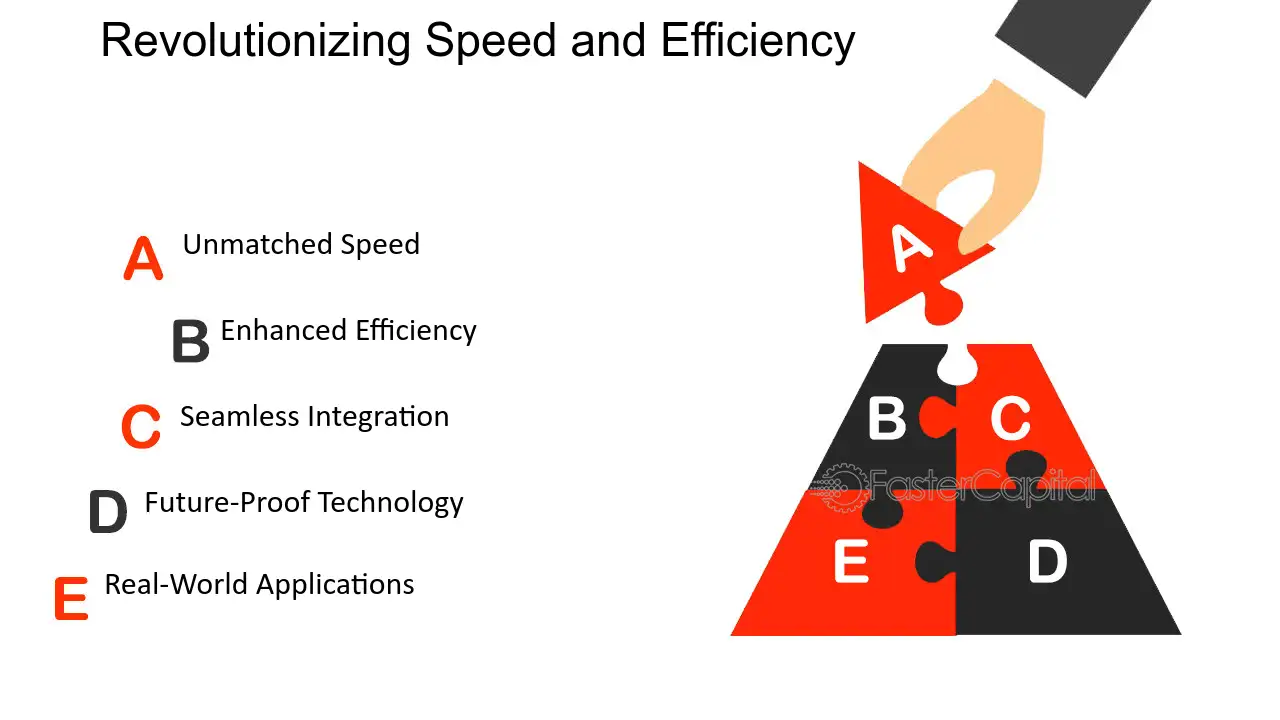
Revolutionizing Speed and Efficiency - Beyond CDs: Unveiling the Limitless Potential of CDPU s Optical Disc Drive
6. The Speed and Efficiency of Bullet Trains
The Speed and Efficiency of Bullet Trains
One of the most impressive features of bullet trains is their speed. These trains can travel at incredibly high speeds, reaching up to 320 km/h (200 mph) in some cases. This speed is achieved through the use of advanced technology, including aerodynamic designs, powerful engines, and advanced braking systems. The speed of bullet trains makes them an attractive option for long-distance travel, as they can cover large distances in a relatively short amount of time.
1. Aerodynamic Design: Bullet trains are designed to be as aerodynamic as possible, reducing wind resistance and allowing them to move quickly through the air. This is achieved through a number of features, including a streamlined body shape, a nose cone that reduces drag, and smooth, rounded edges that minimize air turbulence. These design features help to reduce the amount of energy required to move the train, allowing it to achieve high speeds with relatively low power consumption.
2. Powerful Engines: Bullet trains are powered by electric motors that are capable of producing a large amount of torque. This allows the train to accelerate quickly and maintain high speeds even when traveling up steep inclines. The engines are also designed to be highly efficient, converting a large percentage of the electrical energy they consume into mechanical energy that propels the train forward.
3. Advanced Braking Systems: The high speeds at which bullet trains travel require advanced braking systems to ensure that the train can stop quickly and safely. These braking systems use a combination of regenerative braking, which converts the kinetic energy of the train into electrical energy that can be stored in batteries or fed back into the power grid, and traditional friction brakes, which slow the train using brake pads that press against the wheels.
4. Comparison with Other Modes of Transport: When compared to other modes of transport, such as cars, buses, and airplanes, bullet trains offer a number of advantages in terms of speed and efficiency. For example, while airplanes can travel faster than bullet trains, they require much longer check-in times and are subject to delays caused by weather, air traffic control, and other factors. Similarly, cars and buses are slower than bullet trains and are subject to traffic congestion and other delays.
5. Conclusion: Overall, the speed and efficiency of bullet trains make them an attractive option for long-distance travel. With their advanced technology, aerodynamic design, powerful engines, and advanced braking systems, these trains are capable of traveling at incredibly high speeds while consuming relatively little energy. While they may not be the fastest mode of transport available, they offer a number of advantages over other options and are likely to remain a popular choice for travelers around the world.
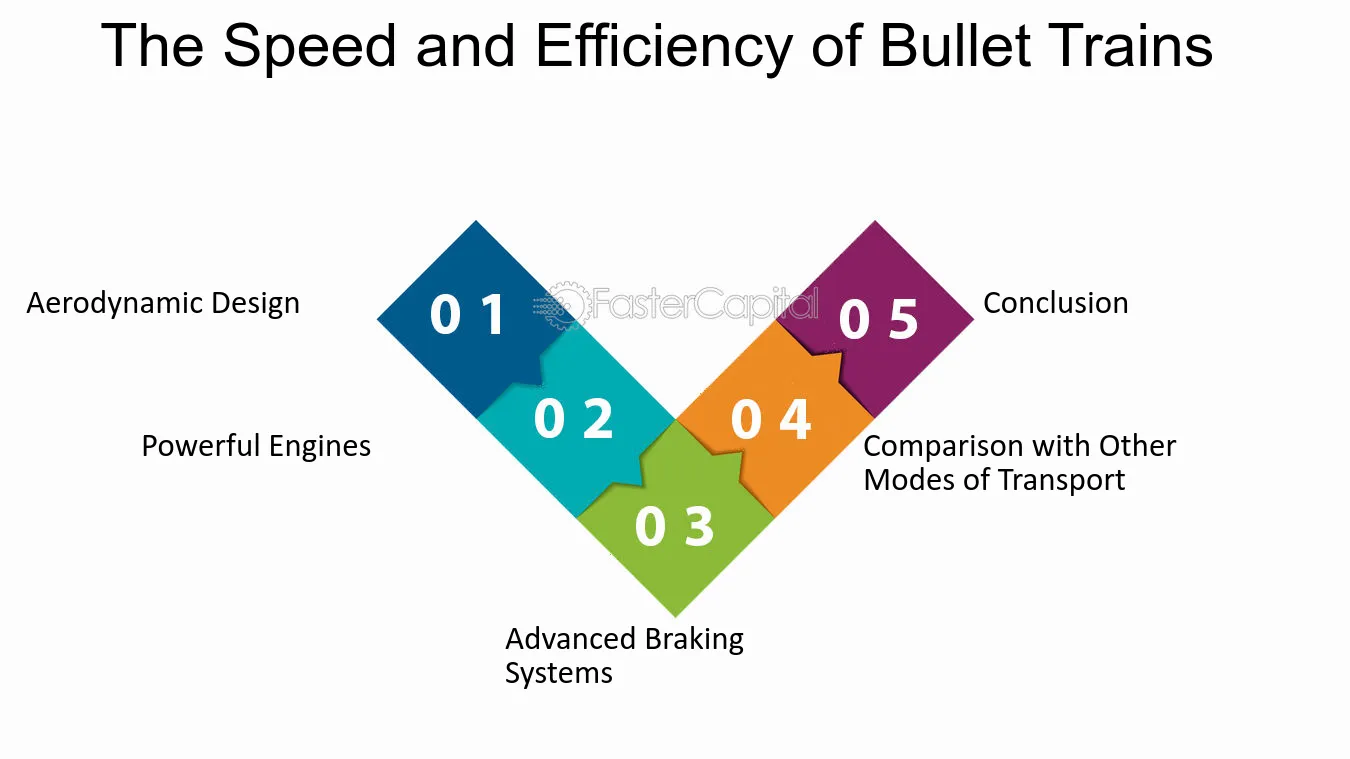
The Speed and Efficiency of Bullet Trains - Bullet trains: JapanInc s Technological Marvel: Riding the Bullet Trains
7. Speed and Efficiency
When it comes to the realm of online payments, speed and efficiency play a crucial role in determining the success of any transaction. In this section, we will delve into the importance of speed and efficiency in both cash on delivery (COD) and card payments, shedding light on the benefits and drawbacks of each method.
From the perspective of customers, speed is often a top priority. In the case of COD, the process is relatively straightforward and quick. Customers simply place an order, and upon delivery, they hand over the cash payment. This eliminates the need for entering card details, waiting for verification, and dealing with potential technical glitches that may occur during online card transactions. For customers who value simplicity and immediate payment completion, COD offers a hassle-free experience.
On the other hand, card payments offer a different kind of speed and efficiency. With the advancement of technology, online transactions have become faster and more secure. Customers can make payments with just a few clicks, without the need to handle physical cash. This convenience is particularly beneficial for those who frequently make online purchases, as it saves time and effort. Additionally, card payments provide instant verification, ensuring that the transaction is completed swiftly.
To provide a more comprehensive understanding of the topic, let's explore the specific benefits of speed and efficiency in both COD and card payments:
1. COD Speed and Efficiency:
- Immediate payment completion: Customers can finalize their purchase instantly upon delivery, without any delays caused by online verification processes.
- No technical issues: COD removes the possibility of encountering technical glitches that may occur during online card transactions, ensuring a smooth payment experience.
- Convenience for those without access to online banking: COD caters to customers who may not have a bank account or prefer not to share their card details online.
2. Card Payment Speed and Efficiency:
- Quick and convenient: With card payments, customers can complete transactions with just a few clicks, saving time and effort.
- Instant verification: Card payments provide immediate verification, eliminating the need to wait for manual confirmation or potential delays caused by cash handling.
- Enhanced security: Online payment gateways use advanced encryption technologies, protecting customers' card details and minimizing the risk of fraud.
To illustrate the benefits of speed and efficiency, let's consider an example. Imagine you urgently need to purchase a gift for a friend's birthday. With COD, you can quickly browse an online store, place an order, and have the gift delivered to your doorstep. Upon delivery, you can pay in cash, completing the transaction without any further steps. On the other hand, if you opt for card payment, you can swiftly select the gift,
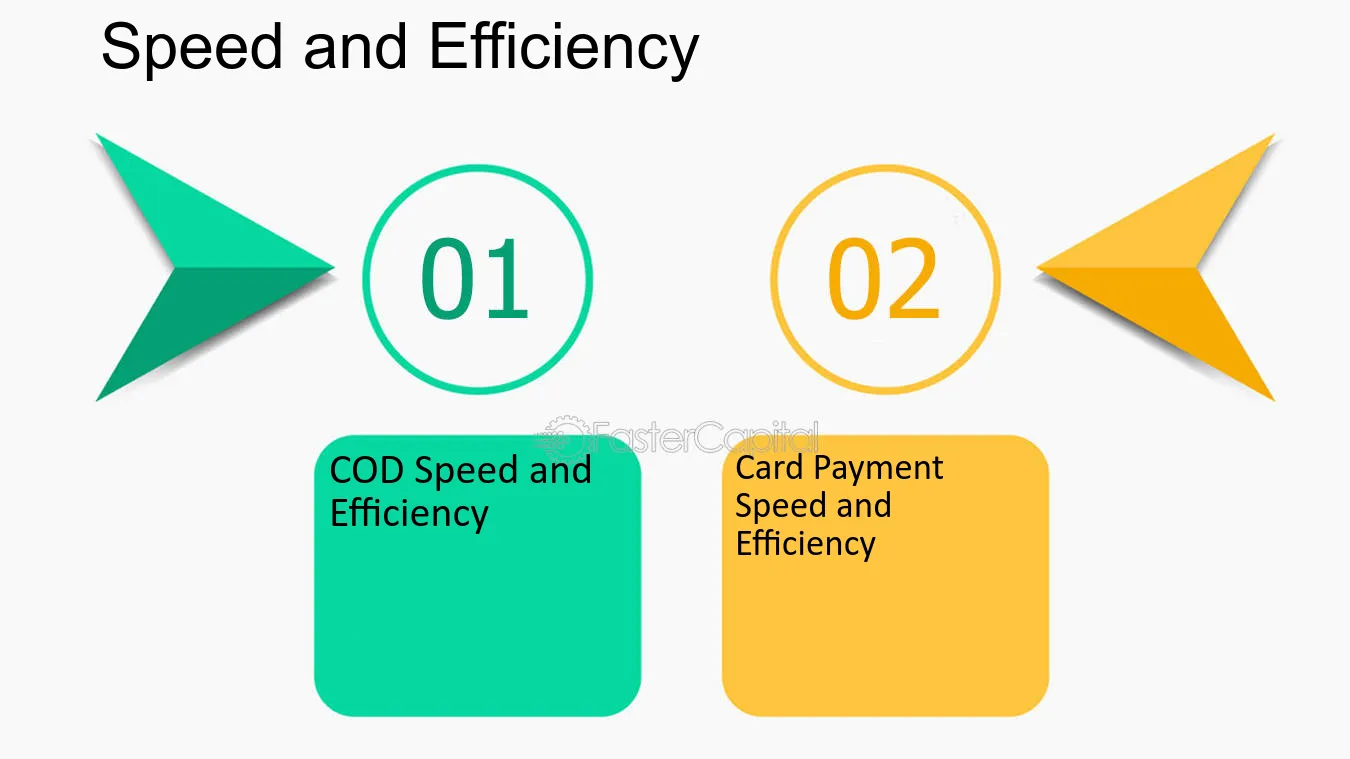
Speed and Efficiency - COD vs: Card Payments: Unveiling the Benefits of Cash on Delivery
8. Assessing the Speed and Efficiency of Paragraph Generation
4.1 Rapid Paragraph Generation:
- The speed at which a paragraph generator can produce paragraphs is a crucial factor in determining its efficiency. Fast paragraph generation allows users to save time and increase productivity, enabling them to focus on other aspects of their writing process.
- Examples: An SEO specialist who needs to generate a large number of paragraphs for various web pages can benefit from a paragraph generator that can quickly produce relevant content, speeding up the website creation process.
4.2 Bulk Paragraph Generation:
- Some paragraph generator solutions offer the ability to generate paragraphs in bulk, significantly reducing the time required for content creation. This feature is particularly useful for writers working on projects that involve generating a substantial amount of content.
- Examples: A content marketing agency tasked with developing content for multiple clients simultaneously can utilize a paragraph generator that supports bulk generation. This capability allows them to meet tight deadlines and deliver high-quality content efficiently.
4.3 Real-Time Editing and Revisions:
- The ability to edit and revise generated paragraphs in real-time is a valuable feature for writers who require iterative content refinement. Paragraph generator solutions that allow seamless editing and revisions within the tool save users time and effort.
- Examples: A copywriter working on an advertising campaign might need to fine-tune the generated paragraphs to align with specific branding guidelines. Real-time editing and revision features enable them to make necessary adjustments without switching between different tools.
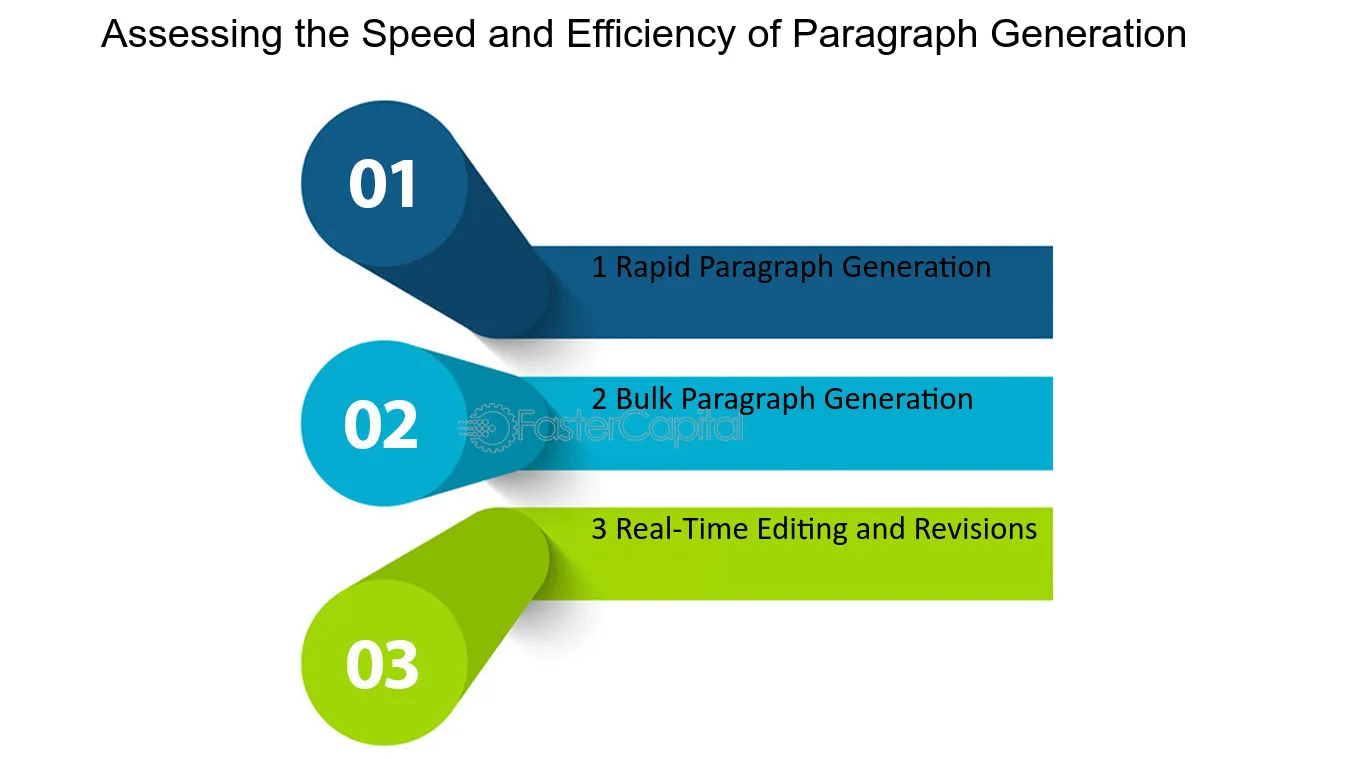
Assessing the Speed and Efficiency of Paragraph Generation - Comparing best paragraph generator solutions which one stands out
9. Factors Affecting Speed and Efficiency
Order execution is a critical aspect of trading in the brokered market. It refers to the process of transmitting and fulfilling orders placed by investors. The speed and efficiency of order execution can have a significant impact on the overall trading experience and the profitability of traders. In this section, we will explore the various factors that affect the speed and efficiency of order execution, providing insights from different perspectives to help traders understand and enhance their trading efficiency.
1. Market Liquidity: One of the primary factors influencing order execution speed and efficiency is market liquidity. Liquidity refers to the ease with which an asset can be bought or sold without causing a significant change in its price. In highly liquid markets, there are numerous buyers and sellers, resulting in faster order execution and minimal slippage. On the other hand, illiquid markets can lead to delays in order execution and potentially higher transaction costs. For example, imagine a trader placing a market order to sell a large number of shares in a highly liquid stock. The order is likely to be executed quickly and at the desired price due to the abundance of buyers. However, if the same order is placed in an illiquid stock, it may take longer to find a buyer, potentially resulting in a less favorable execution price.
2. Trading Venue: The choice of trading venue can also impact order execution speed and efficiency. Different exchanges and trading platforms may have varying levels of technological infrastructure and connectivity, which can affect the speed at which orders are transmitted and executed. Additionally, some venues may offer more advanced order types and routing options, allowing traders to optimize their execution strategies. For instance, a trader using a high-frequency trading strategy may prefer a trading venue that offers low-latency connectivity and co-location services, enabling them to execute orders at lightning-fast speeds. On the other hand, a long-term investor may prioritize a venue with robust order routing capabilities to ensure their orders are efficiently executed across multiple exchanges.
3. Order Type and Size: The type and size of an order can significantly impact its execution speed and efficiency. Market orders, which are executed at the best available price, are typically filled quickly but may be subject to slippage if the market is volatile. Limit orders, on the other hand, allow traders to specify a maximum buy price or minimum sell price, providing more control over the execution price but potentially delaying the execution if the specified price is not met. Moreover, larger orders may require more time to execute as they may need to be split into multiple smaller orders to minimize market impact. For instance, a trader placing a large market order to buy a substantial amount of a thinly traded stock may experience significant price slippage and delays in execution, as the market may not be able to absorb the entire order at once.
4. Connectivity and Technology: The speed and stability of a trader's internet connection, as well as the reliability of their trading platform, can heavily influence order execution efficiency. A fast and stable internet connection is crucial to ensure timely transmission of orders and receipt of execution reports. Similarly, using a technologically advanced trading platform with low latency can help reduce delays in order execution. Traders should also consider using backup systems or redundant connections to mitigate the risk of technical failures or disruptions. For example, a high-frequency trader relying on a slow internet connection may experience delays in order transmission, resulting in missed trading opportunities and suboptimal execution.
5. market Conditions and volatility: Market conditions and volatility can have a significant impact on order execution speed and efficiency. During periods of high volatility, such as market crashes or news events, order execution may become slower and more unpredictable. This is because increased market activity and fluctuations in prices can lead to a higher volume of orders and wider bid-ask spreads. Traders may experience delays in order execution or encounter price slippage, especially when placing market orders. To illustrate, consider a trader trying to buy a stock at a specific price during a highly volatile market. The rapid price movements may make it challenging to execute the order at the desired price, resulting in potential losses or missed trading opportunities.
Understanding the factors that affect order execution speed and efficiency is crucial for traders aiming to enhance their trading performance. Market liquidity, trading venue, order type and size, connectivity and technology, as well as market conditions and volatility, all play a role in determining the speed and efficiency of order execution. By considering these factors and adapting their strategies accordingly, traders can optimize their order execution process and potentially improve their overall trading outcomes.
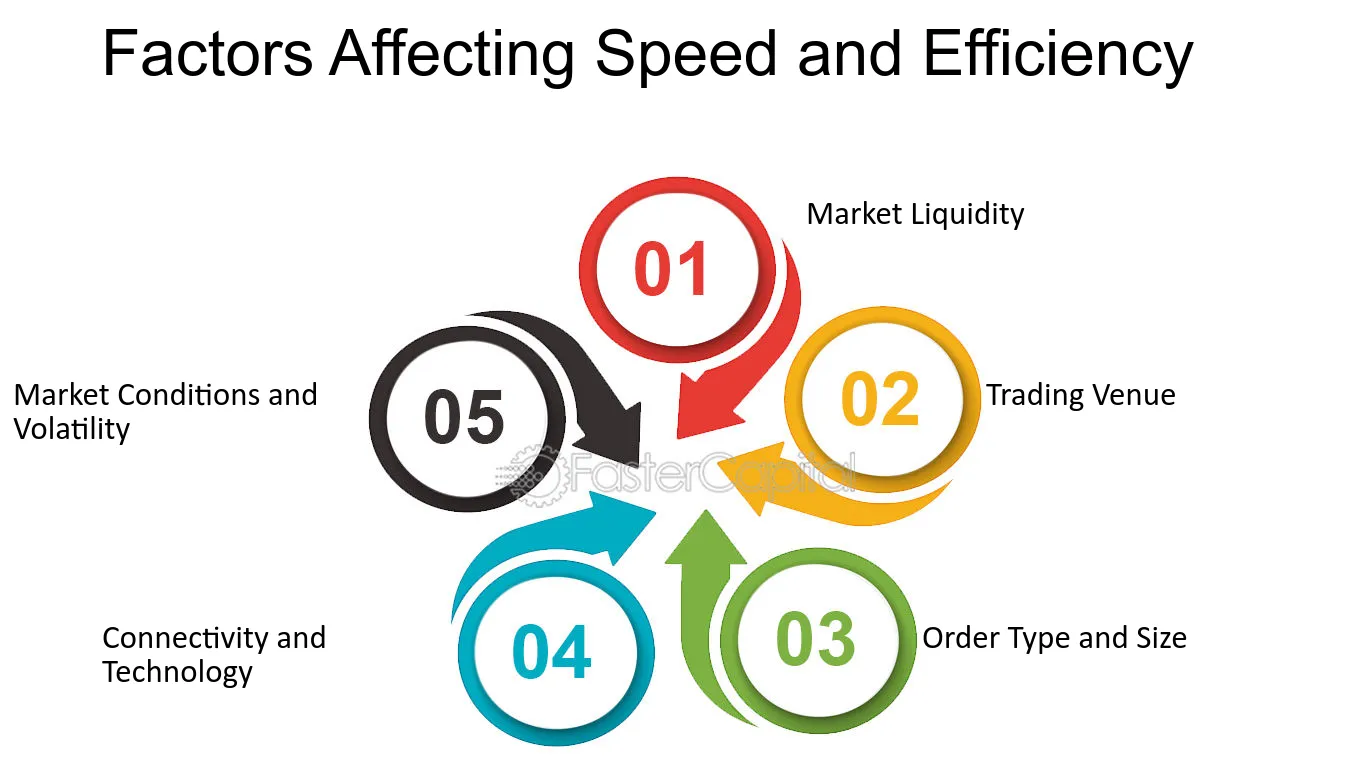
Factors Affecting Speed and Efficiency - Decoding Orders in the Brokered Market: Enhancing Trading Efficiency
10. Enhancing Trading Speed and Efficiency with DMA
1. Faster Execution Times
Direct Market Access (DMA) has revolutionized the way traders execute their orders by providing them with direct access to the market. One of the key advantages of DMA is the ability to enhance trading speed and efficiency. With DMA, traders can execute their orders in a matter of milliseconds, ensuring that they capture the best available prices in real-time. This speed is crucial in fast-paced markets where even a few seconds can make a significant difference in the outcome of a trade.
2. Reduced Latency
Latency, or the delay in the transmission of data, can have a detrimental impact on trading performance. DMA minimizes latency by allowing traders to bypass intermediaries and connect directly to the market. By eliminating the need for order routing through brokers or market makers, DMA enables traders to achieve ultra-low latency execution. This reduction in latency ensures that traders can take advantage of market opportunities as they arise, without being hindered by slow execution times.
3. Enhanced Transparency
DMA provides traders with full transparency into the market by allowing them to see real-time prices and depth of market (DOM). This transparency enables traders to make more informed decisions and execute their orders with confidence. By having access to a comprehensive view of the market, traders can identify liquidity levels, gauge market sentiment, and detect potential price movements. For example, a trader using DMA may observe a sudden increase in buying pressure at a specific price level, indicating a potential upward trend. Armed with this information, the trader can quickly enter a buy order and capitalize on the anticipated price movement.
4. Efficient Order Management
DMA streamlines the order management process by providing traders with direct control over their orders. Traders can customize their order types, specify order parameters, and set up automated trading strategies. This level of control allows traders to execute their trading plans precisely and efficiently. For instance, a trader using DMA may set up stop-loss and take-profit orders to automatically manage their risk and lock in profits. By automating these processes, traders can save time and reduce the likelihood of emotional decision-making.
5. Case Study: XYZ Trading Firm
To illustrate the benefits of DMA in enhancing trading speed and efficiency, let's consider the case of XYZ Trading Firm. Before adopting DMA, XYZ relied on traditional brokerage services, which often resulted in execution delays and limited visibility into the market. However, after transitioning to DMA, XYZ experienced a significant improvement in their trading performance. They were able to execute their orders faster, enabling them to capitalize on short-lived market opportunities. Additionally, the transparency provided by DMA allowed XYZ to make more informed trading decisions, leading to increased profitability.
Tips for Enhancing Trading Speed and Efficiency with DMA:
- Choose a reliable ECN broker that offers DMA services.
- Optimize your trading setup by using a fast and stable internet connection.
- Leverage technology, such as algorithmic trading systems, to automate and streamline your trading processes.
- Stay up-to-date with market news and events to anticipate potential price movements.
- Regularly review and optimize your trading strategies to adapt to changing market conditions.
DMA empowers traders with enhanced trading speed and efficiency. By offering faster execution times, reduced latency, enhanced transparency, and efficient order management, DMA enables traders to capitalize on market opportunities and make more informed trading decisions.

Enhancing Trading Speed and Efficiency with DMA - Direct Market Access: DMA: Empowering Traders with ECN Brokers
11. Speed and Efficiency Upgrades
Enhanced Performance: Speed and Efficiency Upgrades
When it comes to technology, one of the key aspects that users look for is enhanced performance. In the ever-evolving world of gadgets, speed and efficiency upgrades have become crucial in determining the success of a product. The Series 9 10 has brought some exciting changes in this regard, promising a faster and more efficient experience for its users. In this section, we will delve into the various enhancements made to improve the performance of the Series 9 10, exploring different perspectives and comparing options to determine the best choice.
1. Processor Upgrade: One of the most significant factors contributing to improved performance is the upgrade in the processor. The Series 9 10 now features a powerful quad-core processor, compared to the dual-core processor of its predecessor. This upgrade allows for faster multitasking, smoother app performance, and quicker response times. For example, tasks that used to take minutes can now be completed in a matter of seconds, making the overall user experience much more efficient.
2. Increased RAM: Another crucial aspect of enhanced performance is the amount of RAM available. The Series 9 10 offers a higher RAM capacity compared to its previous model, allowing for better multitasking and smoother operation of resource-intensive applications. With increased RAM, users can seamlessly switch between various apps without experiencing any lag or slowdown. For instance, running multiple applications simultaneously, such as photo editing software, video streaming, and web browsing, will be a breeze with the improved RAM capacity.
3. Solid-State Drive (SSD): The inclusion of an SSD in the Series 9 10 is a game-changer in terms of speed and efficiency. Unlike traditional hard drives, SSDs have no moving parts, resulting in faster data access and transfer speeds. With an SSD, boot-up times are significantly reduced, and applications load almost instantaneously. For instance, launching a heavy-duty software like Adobe Photoshop will now take mere seconds, allowing users to dive into their creative work without any delay.
4. Optimized Software: Alongside hardware upgrades, the Series 9 10 also boasts optimized software that maximizes performance. The operating system has been fine-tuned to ensure efficient resource allocation, minimizing background processes that may slow down the system. Additionally, the software now utilizes advanced algorithms to prioritize frequently used applications, further enhancing speed and efficiency. For example, the Series 9 10 intelligently learns user patterns and preloads frequently used apps, reducing launch times and improving overall productivity.
5. Battery Optimization: While performance upgrades focus on speed, efficiency is equally important. The Series 9 10 addresses this by implementing battery optimization techniques. The device intelligently manages power consumption, ensuring that resources are allocated efficiently to minimize energy usage. This results in longer battery life without compromising performance. For instance, the Series 9 10 can now last up to 12 hours on a single charge, making it an ideal companion for users on the go.
The Series 9 10 has made significant enhancements in terms of speed and efficiency, setting a new standard for performance in the tech industry. With a powerful processor, increased RAM, SSD storage, optimized software, and battery optimization, this device offers a seamless and efficient user experience. Whether you're a professional needing to run resource-intensive applications or a casual user looking for a smooth and responsive device, the Series 9 10 is undoubtedly the best option to consider.
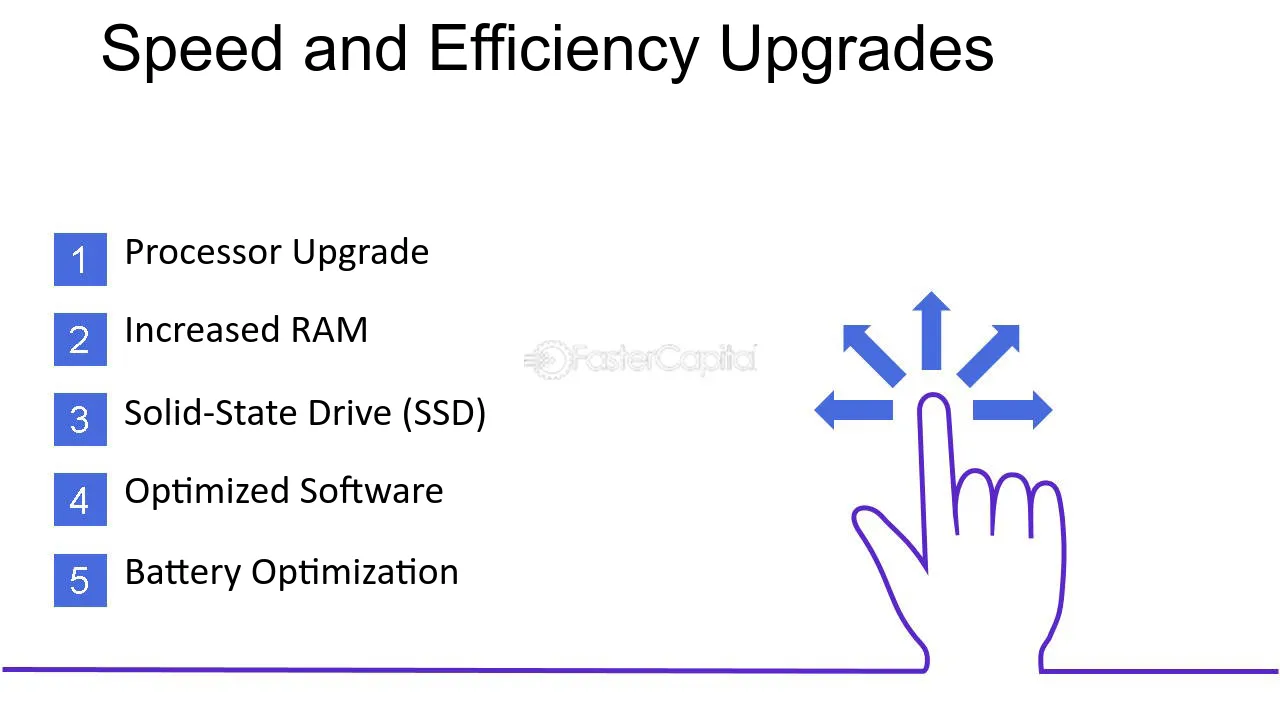
Speed and Efficiency Upgrades - Exploring the New Features of Series 9 10: What s Changed
12. Speed, Efficiency, and Accuracy
1. Speed:
One of the key features that sets FastMarketRule apart from other trading platforms is its exceptional speed. With lightning-fast execution times, traders can take advantage of market opportunities in real-time, ensuring they stay ahead of the competition. Whether you're executing a trade or monitoring market movements, FastMarketRule's rapid response time ensures that you never miss out on crucial trading opportunities. For example, when a stock price suddenly drops, FastMarketRule allows you to execute a sell order within milliseconds, protecting your profits and minimizing potential losses.
2. Efficiency:
Efficiency is another essential aspect of FastMarketRule that contributes to its popularity among traders. The platform is designed to streamline the trading process, minimizing the time and effort required to execute trades. With intuitive navigation and user-friendly interfaces, traders can easily access the tools and information they need to make informed decisions quickly. FastMarketRule's efficient order routing system also ensures that your trades are executed at the best available prices, maximizing your potential returns. For instance, if you place a limit order to buy a particular stock at a specific price, FastMarketRule will automatically execute the trade as soon as the price reaches your desired level, providing you with the best possible outcome.
3. Accuracy:
Accuracy is paramount when it comes to trading, and FastMarketRule excels in this aspect as well. The platform leverages advanced algorithms and real-time data feeds to provide accurate market analysis and insights. By utilizing cutting-edge technology, FastMarketRule eliminates guesswork and provides traders with precise information to make informed decisions. For example, if you're analyzing a stock's historical price movements, FastMarketRule's charting tools will accurately display the data, allowing you to identify patterns and trends to guide your trading strategies.
4. Case Study:
To illustrate the power of FastMarketRule's key features, let's consider a case study. Imagine you're a day trader looking to capitalize on short-term price fluctuations. Using FastMarketRule's speed feature, you can enter and exit trades swiftly, taking advantage of intraday market movements. By leveraging the platform's efficiency, you can quickly analyze multiple stocks, identify potential opportunities, and execute trades without delay. Finally, with FastMarketRule's accuracy, you can rely on precise market data to make well-informed decisions, ultimately enhancing your trading success.
5. Tips for Maximizing FastMarketRule's Key Features:
To make the most of FastMarketRule's key features, here are a few tips:
- Familiarize yourself with the platform: Take the time to explore FastMarketRule's features and functionalities. Understanding how each tool works will enable you to navigate the platform efficiently.
- Customize your settings: Tailor FastMarketRule to your specific trading preferences. Customize alerts, notifications, and watchlists to ensure you receive the information that matters most to you.
- Stay updated with market news: FastMarketRule provides access to real-time news and market updates. Staying informed about the latest developments can help you make timely trading decisions and capitalize on emerging opportunities.
FastMarketRule's key features of speed, efficiency, and accuracy make it a powerful tool for traders seeking to accelerate their trading success. By leveraging the platform's speed, efficiency, and accuracy, traders can execute trades swiftly, make informed decisions, and maximize their potential returns.
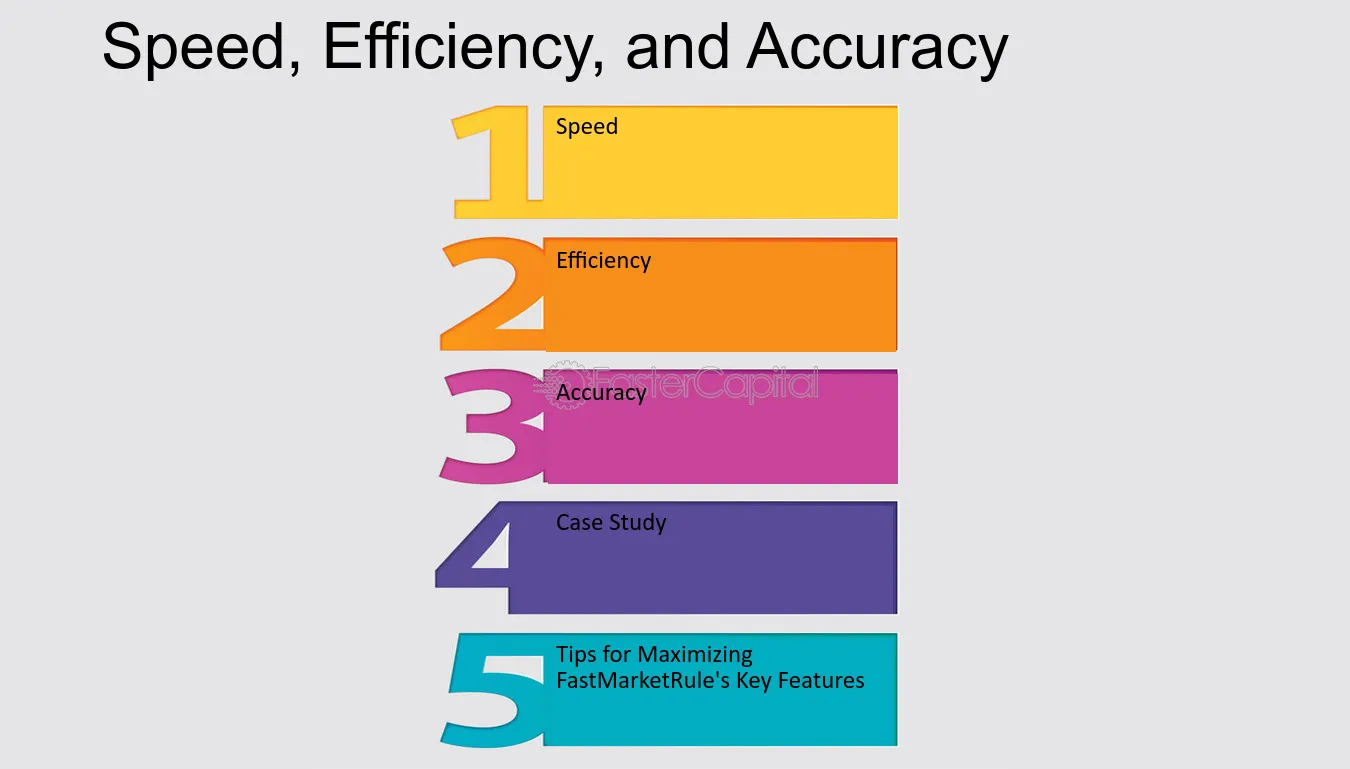
Speed, Efficiency, and Accuracy - FastMarketRule Explained: Accelerating Trading Success
13. A Comparison of Kangaroos Speed and Efficiency
When it comes to the speed and efficiency of kangaroos, there are two main modes of movement that come to mind: hopping and running. While both have their advantages and disadvantages, it's interesting to compare the two and see which one comes out on top.
1. Hopping: Kangaroos are known for their hopping ability, which allows them to cover great distances quickly and efficiently. Hopping is a form of locomotion that uses the kangaroo's powerful hind legs to propel itself forward in a series of jumps. This type of movement is highly efficient, as it allows the kangaroo to conserve energy and cover more ground with less effort. Hopping also allows the kangaroo to navigate rough terrain with ease, as it can easily jump over obstacles and avoid obstacles in its path.
2. Running: While hopping may be the more efficient mode of movement for kangaroos, running has its own advantages. Running allows the kangaroo to reach higher speeds than hopping, which can be useful in certain situations. For example, if a kangaroo needs to escape a predator quickly, running may be the better option. Running also allows the kangaroo to change direction more quickly, which can be useful in evading predators or navigating through dense vegetation.
3. Efficiency: When it comes to overall efficiency, hopping is generally considered to be the better option for kangaroos. Hopping allows the kangaroo to cover more ground with less effort, which means it can travel longer distances without getting tired. Hopping also puts less strain on the kangaroo's joints, which can help prevent injuries and keep the animal healthy.
4. Speed: While hopping may be more efficient, running is generally faster. Kangaroos can reach speeds of up to 56 km/h (35 mph) when running, which is faster than most humans can run. However, running is also more tiring for kangaroos, as it requires more energy and puts more strain on their joints.
5. Conclusion: In the end, both hopping and running have their advantages and disadvantages when it comes to the speed and efficiency of kangaroos. While hopping may be the more efficient mode of movement, running allows kangaroos to reach higher speeds when necessary. Ultimately, the best mode of movement for a kangaroo depends on the situation it finds itself in.
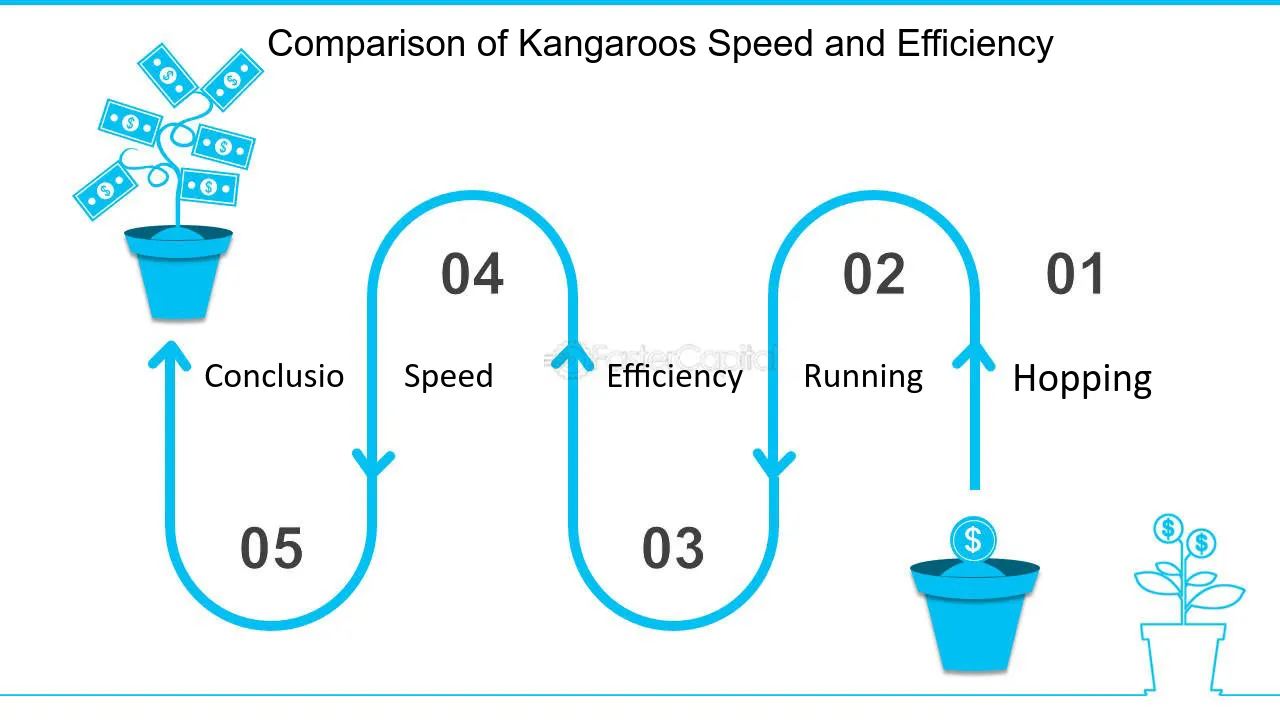
A Comparison of Kangaroos Speed and Efficiency - Hopping Marvels: The Incredible Agility of Kangaroos
14. Introduction to the Impact of AI on Content Speed and Efficiency
In today's fast-paced digital world, content speed and efficiency are crucial factors for businesses looking to stay ahead of the competition. With the advent of artificial intelligence (AI), content creation, production, and optimization have been revolutionized, leading to significant improvements in speed and efficiency. AI-powered tools and technologies have streamlined various aspects of content creation and marketing, allowing businesses to generate high-quality content quickly and effortlessly.
This article delves into the impact of AI on content speed and efficiency, exploring how AI-powered content creation, editing, curation, and marketing tools have transformed the landscape. We will also discuss the challenges and limitations associated with AI in content speed and efficiency, providing insights into the future of AI in this domain.
15. Speed and Efficiency
In today's fast-paced world, speed and efficiency have become one of the most critical factors for success in the fashion industry. Inditex, the parent company of Zara, has taken this concept to the next level and has revolutionized the fashion industry with its unique business model. The company's founder, Amancio Ortega, has built a fast-fashion empire that can quickly bring new styles to market and respond to changing trends in real-time. The key to Inditex's success is its ability to produce high-quality, on-trend clothing at an affordable price point, and bring it to market faster than any other retailer.
Here are some of the ways that Inditex has achieved such incredible speed and efficiency in its supply chain and operations:
1. Vertical Integration: Inditex owns much of its supply chain, from design and manufacturing to distribution and retail. This vertical integration allows the company to have greater control over its operations, reduce lead times, and respond more quickly to market demand.
2. Fast Fashion: Inditex's fast fashion business model is based on producing small batches of clothing and bringing them to market quickly. The company has developed a unique system that allows it to design, produce, and distribute new styles to stores in as little as two weeks. This approach ensures that the company's stores always have fresh inventory, and customers can always find something new and exciting to buy.
3. Data-Driven Design: Inditex uses data and customer feedback to inform its design decisions. The company has a team of over 200 designers who work closely with data analysts to identify emerging trends and create new styles that customers will love. By using data to drive its design decisions, Inditex can be confident that it is producing clothing that people want to buy.
4. RFID Technology: Inditex uses RFID (Radio Frequency Identification) technology to track its inventory and improve its supply chain efficiency. The company can quickly locate items in its stores and distribution centers, which allows it to restock quickly and ensure that its stores always have the right inventory on hand.
5. Just-In-Time Manufacturing: Inditex uses a just-in-time manufacturing system that allows it to produce clothing in small batches and respond quickly to changes in demand. This approach helps the company reduce waste and improve its supply chain efficiency.
Overall, Inditex's success is based on its ability to innovate and adapt quickly to changes in the market. By investing in technology, data analysis, and vertical integration, the company has built a supply chain that is faster and more efficient than any other retailer. The result is a business model that has disrupted the fashion industry and made Inditex one of the most successful and influential companies in the world.
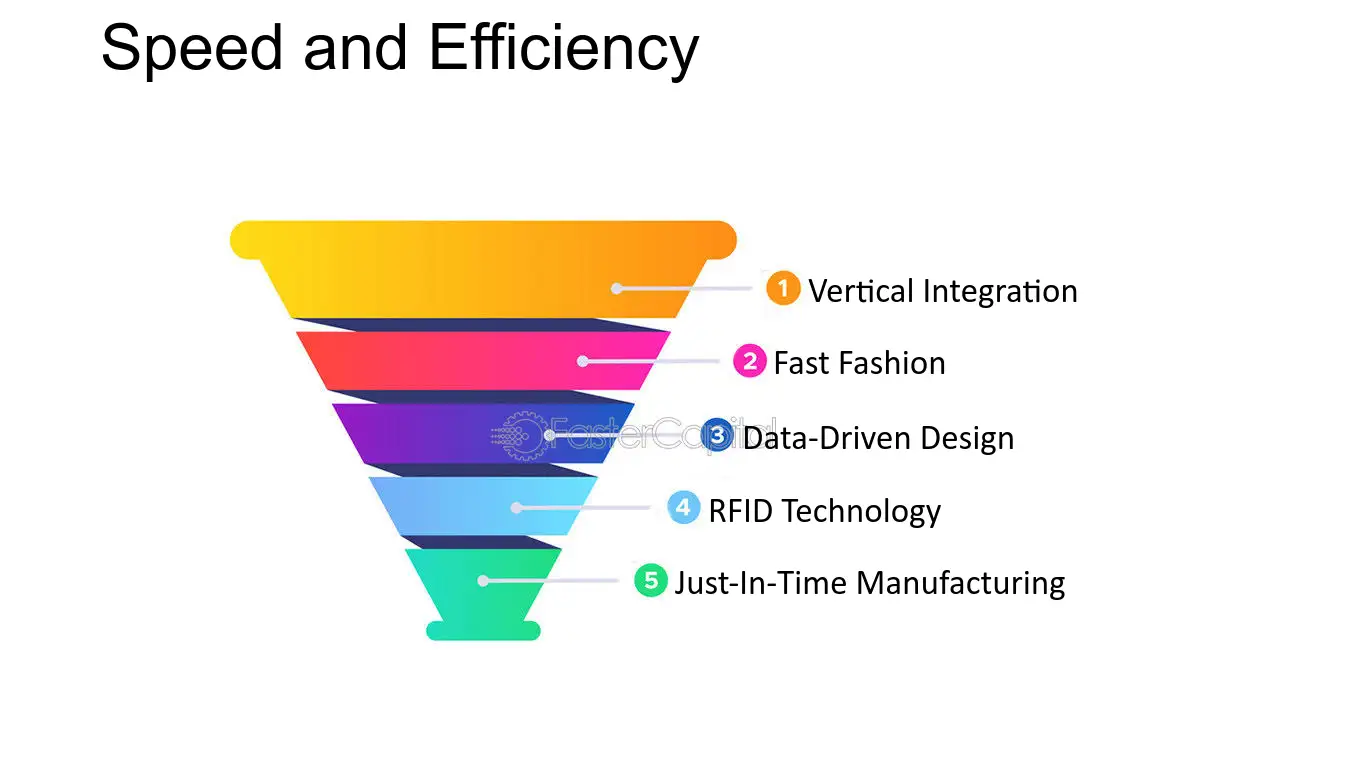
Speed and Efficiency - Inditex: Behind the Success Story: Amancio Ortega s Inditex Empire
16. Speed, Efficiency, and Accuracy
1. Speed: The first key feature that sets fastMarketRule apart from other trading platforms is its lightning-fast speed. In the fast-paced world of trading, every second counts, and with FastMarketRule, you can execute trades in a matter of milliseconds. This rapid execution speed ensures that you can take advantage of market opportunities as soon as they arise, giving you a competitive edge over other traders.
2. Efficiency: FastMarketRule is designed to optimize your trading workflow, making it incredibly efficient. The platform offers a user-friendly interface that allows you to navigate seamlessly between different trading options and execute trades with ease. Whether you are a novice trader or an experienced professional, FastMarketRule streamlines the trading process, saving you valuable time and effort.
3. Accuracy: Trading requires precision, and FastMarketRule delivers on that front with its high level of accuracy. The platform utilizes advanced algorithms and real-time data to provide you with accurate market information and analysis. This ensures that you can make informed trading decisions based on reliable data, reducing the risk of errors and maximizing your chances of success.
Example: Let's say you are a day trader who relies on quick market movements to make profitable trades. With FastMarketRule's speed, you can enter and exit trades swiftly, taking advantage of short-term price fluctuations. This speed is crucial in fast-moving markets, where a delay of even a few seconds can mean missing out on a profitable trade.
Tip: To make the most of FastMarketRule's speed, it is essential to stay updated on market news and trends. By keeping a close eye on market developments, you can anticipate potential opportunities and act quickly when the time is right.
Case Study: John, a professional trader, was using a traditional trading platform that lacked the speed and efficiency he needed to stay ahead of the market. Frustrated with missed opportunities, he decided to switch to FastMarketRule. The platform's lightning-fast speed allowed John to execute trades instantly, enabling him to capitalize on market movements and generate higher profits. With the accuracy of FastMarketRule's real-time data, John made more informed trading decisions, further boosting his success rate.
FastMarketRule's key features of speed, efficiency, and accuracy make it a game-changer for traders. By providing lightning-fast execution, streamlining the trading process, and delivering accurate market information, FastMarketRule empowers traders to make swift and informed decisions, ultimately enhancing their trading performance.
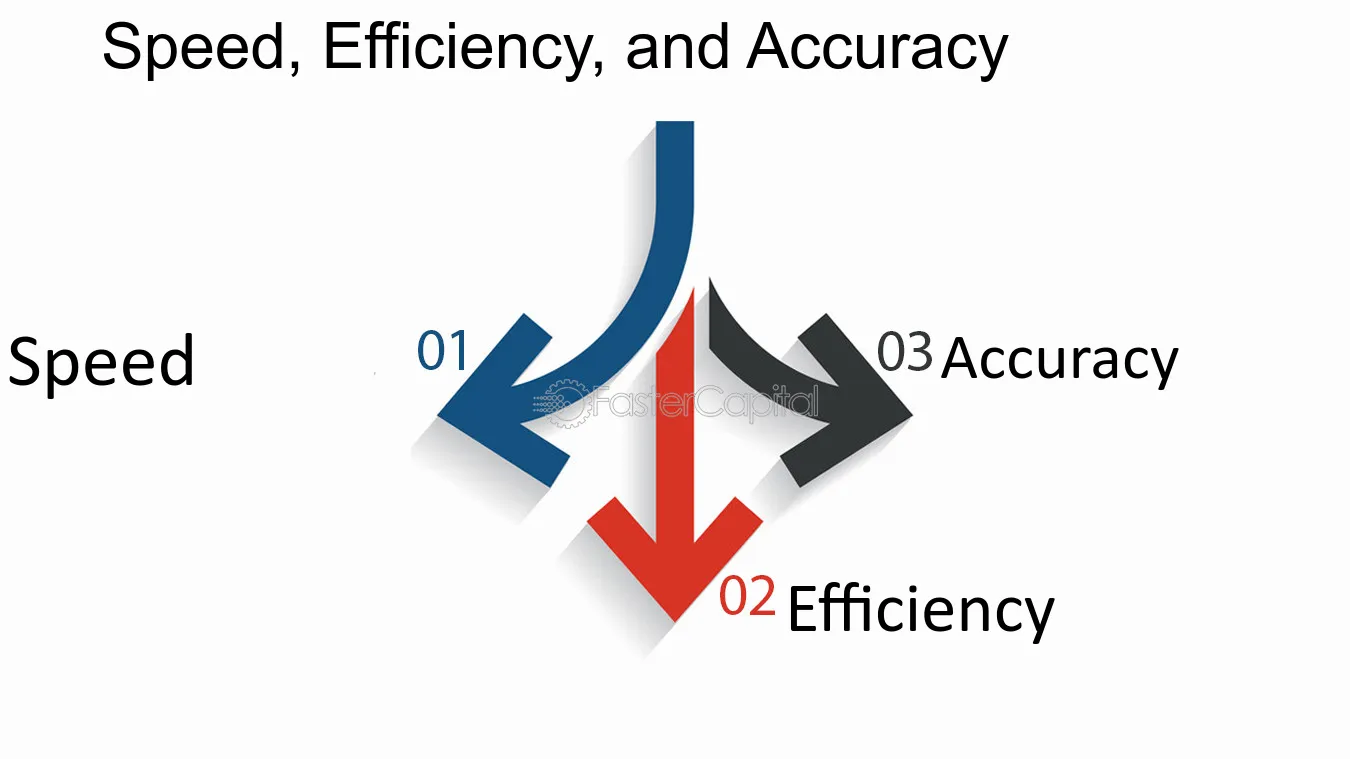
Speed, Efficiency, and Accuracy - Lightning Fast Trading with FastMarketRule: A Game Changer for Traders
17. The Speed and Efficiency of Online Title Loan Approval
1. Quick and Convenient Application Process
One of the major advantages of online title loans is the speed and efficiency of the approval process. Unlike traditional loans that often require extensive paperwork and lengthy waiting periods, online title loans can be approved within a matter of hours or even minutes. The online application process is incredibly convenient, allowing borrowers to apply from the comfort of their own homes, without the need for multiple in-person visits to a physical lender location.
2. Streamlined Documentation Requirements
Online title loan lenders have simplified the documentation requirements, making it easier and faster for borrowers to get approved. Typically, all that is needed is a valid driver's license, proof of income, proof of residence, and the title to the vehicle being used as collateral. These documents can be easily uploaded or faxed to the lender, eliminating the need for time-consuming paperwork.
3. Instant Pre-Approval and Loan Estimates
Online title loan lenders often provide instant pre-approval and loan estimates based on the information provided in the online application. This gives borrowers a clear idea of the loan amount they can expect to receive, as well as an understanding of the repayment terms. By receiving this information upfront, borrowers can make informed decisions about whether or not to proceed with the loan application.
4. Faster Funding and Disbursement
Once the online title loan application is approved, the funds can be disbursed quickly. In some cases, borrowers can receive the loan amount in their bank account within 24 hours. This is particularly beneficial for individuals who require immediate access to cash for emergency expenses or unforeseen financial situations.
5. Case Study: Sarah's Emergency Medical Expenses
Sarah found herself in a difficult situation when her son required emergency medical treatment. She needed a significant amount of money quickly to cover the medical bills and didn't have the luxury of waiting for a traditional loan approval. Sarah decided to apply for an online title loan using her car as collateral.
Within hours of submitting her application, Sarah received pre-approval and a loan estimate. The funds were disbursed to her bank account the next day, allowing her to pay for her son's medical expenses without delay. The speed and efficiency of the online title loan approval process made a significant difference in her ability to handle the crisis effectively.
Tips for a Smooth Online Title Loan Approval:
- Gather all the necessary documents beforehand to expedite the application process.
- Double-check the accuracy of the information provided in the application to avoid delays or potential rejections.
- Choose a reputable online title loan lender with positive customer reviews and transparent terms and conditions.
- Read and understand the loan agreement thoroughly before accepting the terms to ensure you are comfortable with the repayment terms and any associated fees.
The speed and efficiency of online title loan approval make it an attractive option for individuals in need of quick access to cash. The streamlined application process, instant pre-approval, and fast funding make online title loans a convenient solution for emergency expenses or unexpected financial situations.
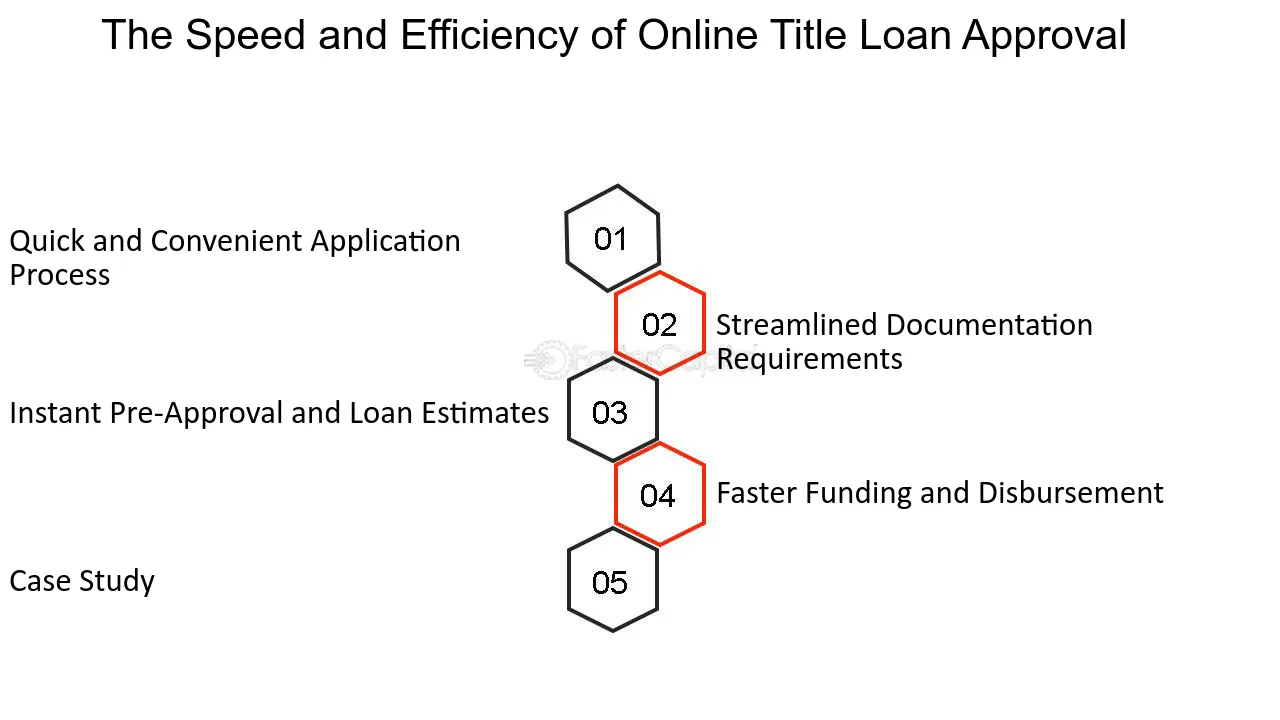
The Speed and Efficiency of Online Title Loan Approval - Online title loan: The Digital Advantage: Getting a Title Loan Online
18. The Importance of Speed and Efficiency in Order Matching
2. Utilizing speed and efficiency in order matching is crucial in the fast-paced world of inter-dealer brokers. As the middlemen between buyers and sellers, it is our responsibility to ensure that orders are matched accurately and promptly. Here, we delve into the importance of speed and efficiency in order matching, and how it can greatly impact the success of inter-dealer brokers.
3. Time is of the essence in the financial markets, where prices fluctuate rapidly and opportunities arise and vanish within seconds. By matching orders quickly, inter-dealer brokers can seize these opportunities and execute trades at the most favorable prices for their clients. For example, imagine a situation where a broker receives a buy order for a particular stock at a specific price. If the broker can match this order with a corresponding sell order within a short period of time, the client can benefit from purchasing the stock at the desired price before it increases further. However, if the order is not matched swiftly, the stock price may rise, resulting in missed opportunities for the client.
4. Efficiency in order matching also plays a significant role in minimizing risks and ensuring fair trading practices. When orders are matched efficiently, the chances of errors or discrepancies are reduced. This is particularly important in high-frequency trading, where large volumes of orders are processed within milliseconds. By leveraging advanced technology and algorithms, inter-dealer brokers can match orders accurately and swiftly, minimizing the potential for errors that could lead to financial losses or legal disputes.
5. One of the key tips for achieving speed and efficiency in order matching is to leverage automation. By automating the order matching process, brokers can eliminate manual errors, reduce processing times, and improve overall accuracy. Automation also allows for seamless integration with various trading platforms and systems, enabling brokers to access a wider pool of liquidity and execute trades more effectively.
6. Case studies have demonstrated the significant impact of speed and efficiency in order matching. For instance, in a study conducted by a leading brokerage firm, it was found that by reducing the average order matching time from 5 seconds to 1 second, the firm was able to increase trading volumes by 20%. This highlights the immense value that speed and efficiency bring to inter-dealer brokers, not only in terms of client satisfaction but also in driving business growth.
7. Additionally, speed and efficiency in order matching can enhance the reputation of inter-dealer brokers. In a highly competitive industry, brokers who consistently match orders quickly and accurately are more likely to attract and retain clients. By providing a seamless and efficient trading experience, brokers can build trust and credibility, leading to long-term relationships and increased business opportunities.
8. In conclusion, speed and efficiency in order matching are integral to the success of inter-dealer brokers. By matching orders quickly and accurately, brokers can seize opportunities, minimize risks, and enhance their reputation. Leveraging automation, embracing advanced technology, and learning from case studies are all effective strategies for achieving speed and efficiency in order matching. As the art of order matching continues to evolve, it is crucial for inter-dealer brokers to prioritize speed and efficiency to stay competitive in the dynamic financial markets.
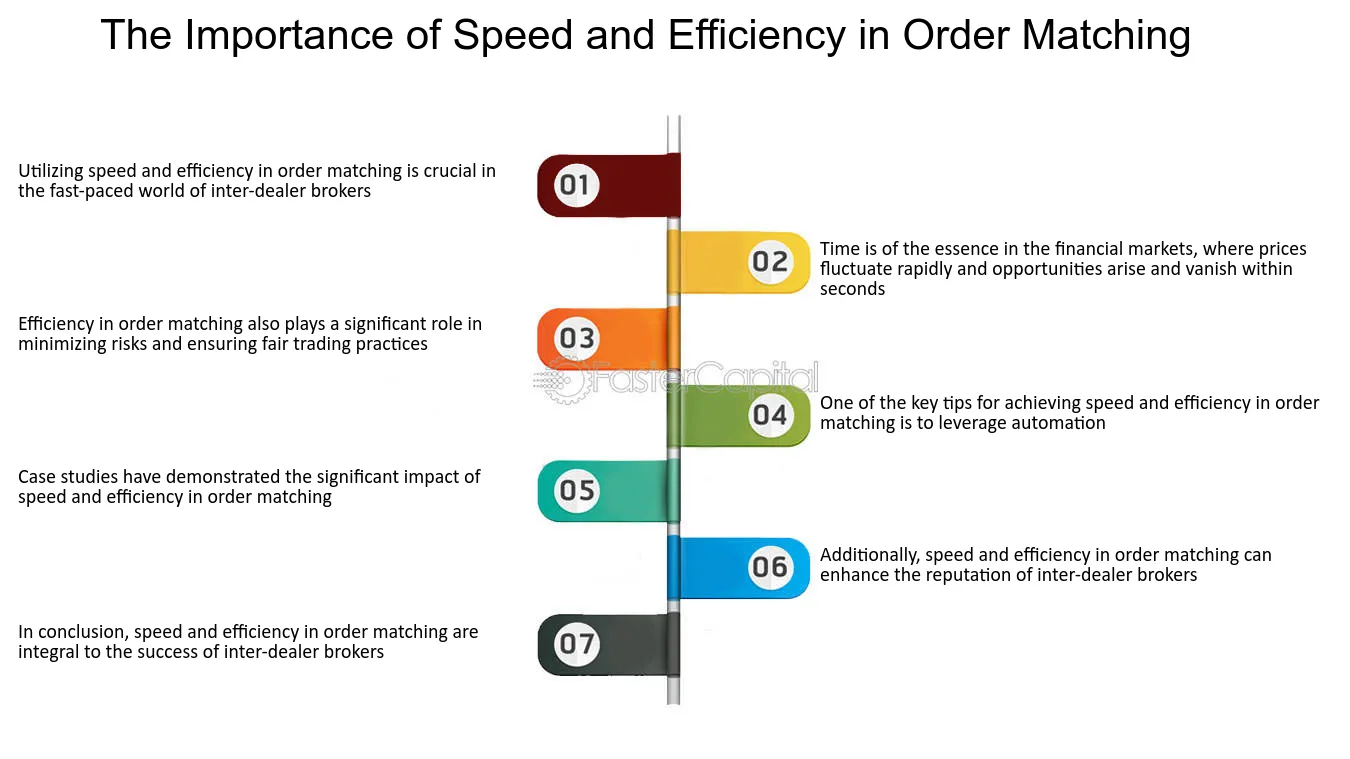
The Importance of Speed and Efficiency in Order Matching - Order matching: The Art of Order Matching: Inter Dealer Brokers in Action
19. Speed, Efficiency, and Transparency
Real-time settlement has become a game-changer in the world of interbank payments, providing financial institutions with unprecedented speed, efficiency, and transparency. As a leading real-time gross settlement system, CHIPS (Clearing House Interbank Payments System) has revolutionized the way banks settle their transactions, offering a host of advantages that have reshaped the landscape of global payments. In this section, we will delve into the key benefits of real-time settlement with CHIPS, exploring how it has transformed the banking industry and enhanced the overall payment experience for businesses and consumers alike.
1. Speed: Real-time settlement with CHIPS offers lightning-fast transaction processing, enabling financial institutions to settle payments instantaneously. Gone are the days of waiting for days or even weeks for funds to be transferred between banks. With CHIPS, transactions are settled in real-time, ensuring that funds are available to the recipient immediately. This speed is particularly advantageous in scenarios where time is of the essence, such as urgent cross-border payments or time-sensitive financial transactions. For example, a multinational corporation can now seamlessly transfer funds between its subsidiaries across different countries, allowing for agile decision-making and improved cash flow management.
2. Efficiency: CHIPS' real-time settlement system streamlines the payment process, eliminating the need for manual intervention and reducing operational costs for financial institutions. By automating the settlement process, CHIPS minimizes the risk of human errors and eliminates the need for manual reconciliation. This increased efficiency not only reduces costs but also enhances the overall reliability and accuracy of interbank payments. Financial institutions can now focus on value-added activities rather than spending valuable time and resources on manual payment processing. This efficiency is particularly beneficial in high-volume payment environments, where large volumes of transactions need to be settled swiftly and accurately.
3. Transparency: Real-time settlement with CHIPS brings a new level of transparency to interbank payments, providing stakeholders with real-time visibility into the status of their transactions. Participants can track the progress of their payments throughout the settlement process, ensuring complete visibility and accountability. This transparency fosters trust among financial institutions and their clients, as it allows for easy monitoring of transaction flows and facilitates timely dispute resolution. For instance, a corporate treasury department can easily track the movement of funds between its accounts, ensuring accurate cash forecasting and minimizing the risk of fraudulent activities.
4. Risk Mitigation: CHIPS' real-time settlement system significantly reduces counterparty risk by ensuring that funds are settled immediately. In traditional settlement systems, banks are exposed to credit risk during the settlement period, as funds are not transferred instantly. However, with CHIPS, the risk of non-payment or default is mitigated, as settlement occurs in real-time. This enhanced risk management capability provides financial institutions with greater confidence in conducting interbank transactions and facilitates smoother financial operations. For example, a bank can confidently extend credit to its customers, knowing that funds can be settled instantly through CHIPS, reducing the risk of non-payment.
5. Global Reach: CHIPS' real-time settlement system has a widespread network of participants, enabling seamless cross-border payments. With over 70 direct and indirect participants, CHIPS facilitates interbank transactions between financial institutions across the globe. This global reach ensures that businesses and individuals can transfer funds internationally with ease, eliminating the complexities associated with traditional cross-border payments. For instance, a small business owner in the United States can effortlessly pay a supplier in Europe through CHIPS, without the need for multiple intermediaries or lengthy processing times.
Real-time settlement with CHIPS has revolutionized the interbank payment landscape, offering unparalleled advantages in terms of speed, efficiency, transparency, risk mitigation, and global reach. The ability to settle transactions instantaneously has transformed the way financial institutions conduct their operations, providing them with a competitive edge in an increasingly fast-paced and digital world. As the demand for real-time payments continues to grow, CHIPS remains at the forefront, driving innovation and reshaping the future of interbank payments.
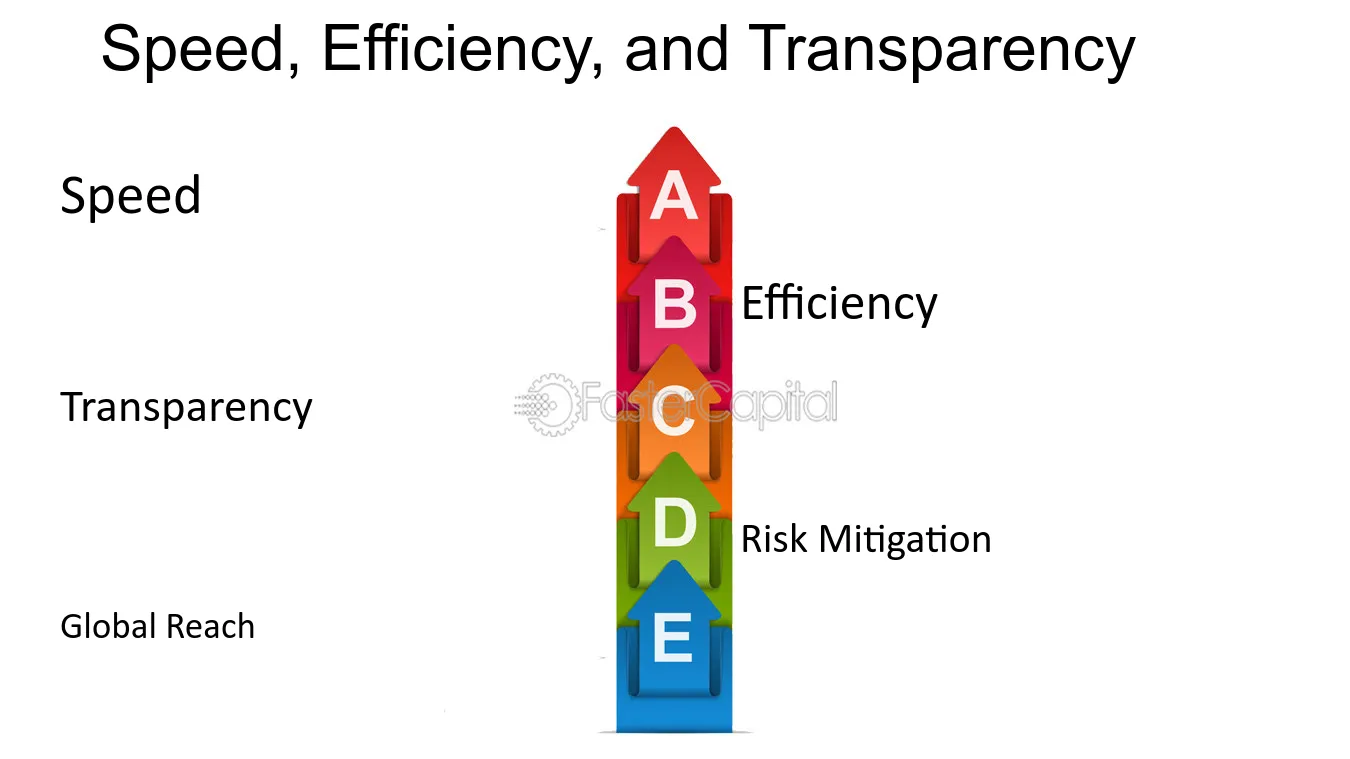
Speed, Efficiency, and Transparency - Real time Settlement: How CHIPS Revolutionizes Interbank Payments
20. Speed and Efficiency
1. Speed and efficiency are two crucial factors to consider when comparing the performance of smartphones. In this section, we will delve into the performance comparison between the Samsung S8 and the iPhone 8, focusing specifically on their speed and efficiency. Let's explore which phone offers a better user experience in terms of performance.
2. Speed plays a vital role in today's fast-paced digital world. Both the Samsung S8 and the iPhone 8 boast powerful processors and ample RAM, ensuring smooth multitasking and swift app launches. However, when it comes to raw processing power, the iPhone 8 takes the lead with its A11 Bionic chip. Benchmarks have consistently shown that the A11 chip outperforms the Snapdragon 835 found in the S8, delivering faster app loading times and smoother overall performance.
3. Efficiency is equally important, especially for those who rely heavily on their smartphones throughout the day. The Samsung S8 utilizes the Android operating system, known for its customization options and flexibility. While this offers a wide range of features and possibilities, it can sometimes result in a slightly less efficient battery usage compared to the iPhone 8's iOS. The iPhone 8, with its optimized software-hardware integration, tends to provide better battery life and power management, ensuring longer usage without needing a charge.
4. Case studies have demonstrated the efficiency of the iPhone 8 in real-world scenarios. For instance, various tests have shown that the iPhone 8 consumes less battery while playing graphics-intensive games compared to the Samsung S8. This can be attributed to the efficient utilization of the A11 Bionic chip and the optimization of iOS for gaming. Similarly, when running resource-intensive applications or multitasking, the iPhone 8 tends to maintain a smoother performance and preserve battery life better than its Android counterpart.
5. Tips for maximizing the speed and efficiency of your smartphone also come in handy. Regardless of the device you choose, clearing unnecessary background apps, regularly updating your software, and optimizing your settings can significantly improve performance. It is advisable to avoid installing too many unnecessary apps that may consume system resources and impact overall speed. Additionally, enabling power-saving modes or reducing screen brightness can help conserve battery life, ensuring your phone lasts longer throughout the day.
While both the Samsung S8 and the iPhone 8 offer impressive performance, there are notable differences in terms of speed and efficiency. The iPhone 8 excels in raw processing power and efficient battery management, making it an excellent choice for users seeking a smooth and long-lasting smartphone experience. However, it's important to consider your personal preferences and requirements when deciding which phone suits you best.
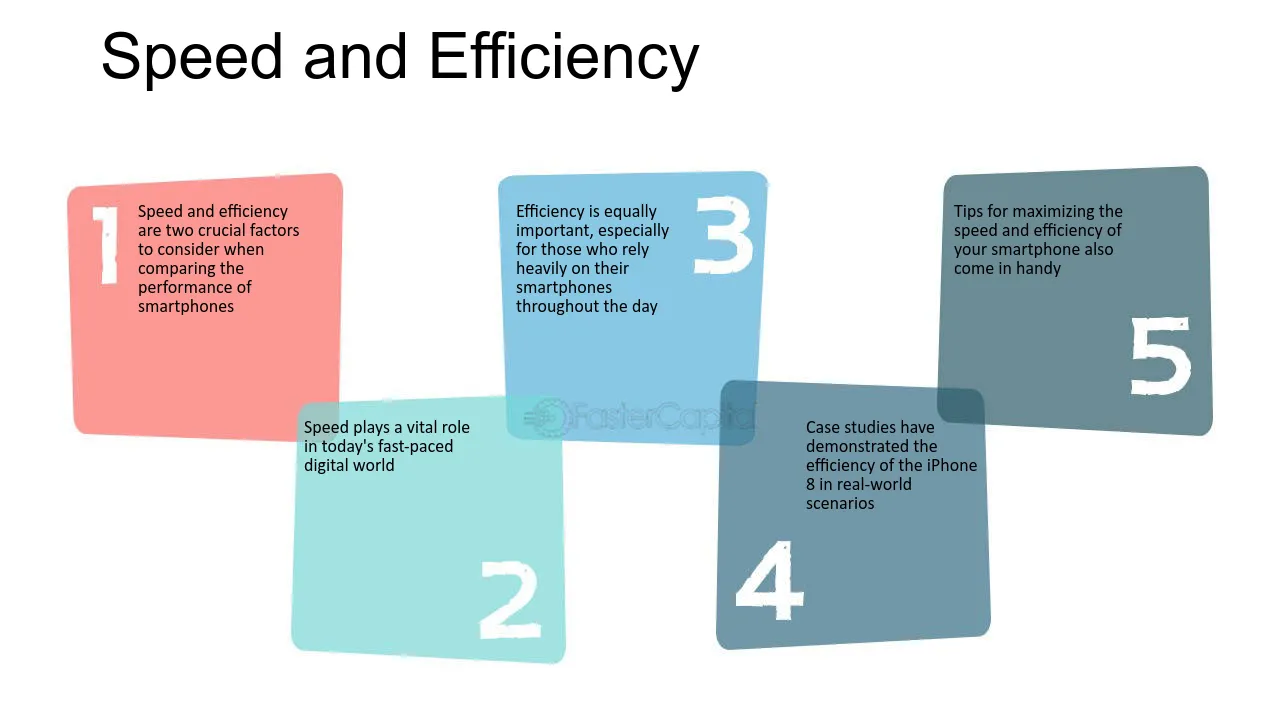
Speed and Efficiency - S8 and iPhone 8: Which Phone Has Better Storage Options
21. Tips to Optimize Speed and Efficiency on Your S8
1. Clear up storage space: One of the most effective ways to optimize the speed and efficiency of your S8 is by clearing up storage space. When your device's storage is almost full, it can significantly slow down its performance. To free up space, start by deleting unnecessary apps, photos, videos, and files. You can also use the built-in storage management tools on your S8 to identify and remove any large or unused files that are taking up valuable space.
2. Disable or uninstall unused apps: Another way to boost performance is by disabling or uninstalling unused apps. Many smartphones come pre-installed with numerous apps that you may never use. These apps not only take up storage space but can also drain your device's resources in the background. Go through your app list and disable or uninstall any apps that you don't need or use regularly. This will help streamline your device's performance and improve its overall speed.
3. Limit background processes: Background processes running on your S8 can consume valuable system resources and slow down your device. To optimize speed and efficiency, limit the number of background processes running at any given time. You can do this by going to the Developer Options in your device settings and adjusting the background process limit. By reducing the number of background processes, you'll notice a significant improvement in the responsiveness and speed of your S8.
4. Use a lightweight launcher: If you feel that your S8's interface is sluggish, consider using a lightweight launcher. Launchers are apps that allow you to customize your device's home screen and app drawer. Some launchers, such as Nova Launcher or Microsoft Launcher, are known for their speed and efficiency. By using a lightweight launcher, you can give your S8 a performance boost and enjoy a smoother and more responsive user experience.
5. Clear cache regularly: Over time, your S8 accumulates temporary files and cached data from various apps and processes. These files can take up valuable storage space and slow down your device. To optimize speed and efficiency, it's important to clear the cache regularly. You can do this by going to the Storage settings on your S8 and selecting the option to clear cache. By clearing the cache, you'll not only free up storage space but also improve the overall performance of your device.
6. Update your software: Keeping your S8's software up to date is crucial for maintaining optimal performance. Software updates often include bug fixes, security patches, and performance improvements. Make sure to regularly check for and install any available updates for your device. This will ensure that your S8 is running on the latest software version, which can help enhance its speed, efficiency, and overall user experience.
By implementing these tips, you can optimize the speed and efficiency of your S8, ensuring that you get the most out of your device. Remember to regularly clean up storage space, disable or uninstall unused apps, limit background processes, use a lightweight launcher, clear cache, and keep your software up to date. These simple yet effective strategies will help you enjoy a faster, smoother, and more efficient user experience on your S8.
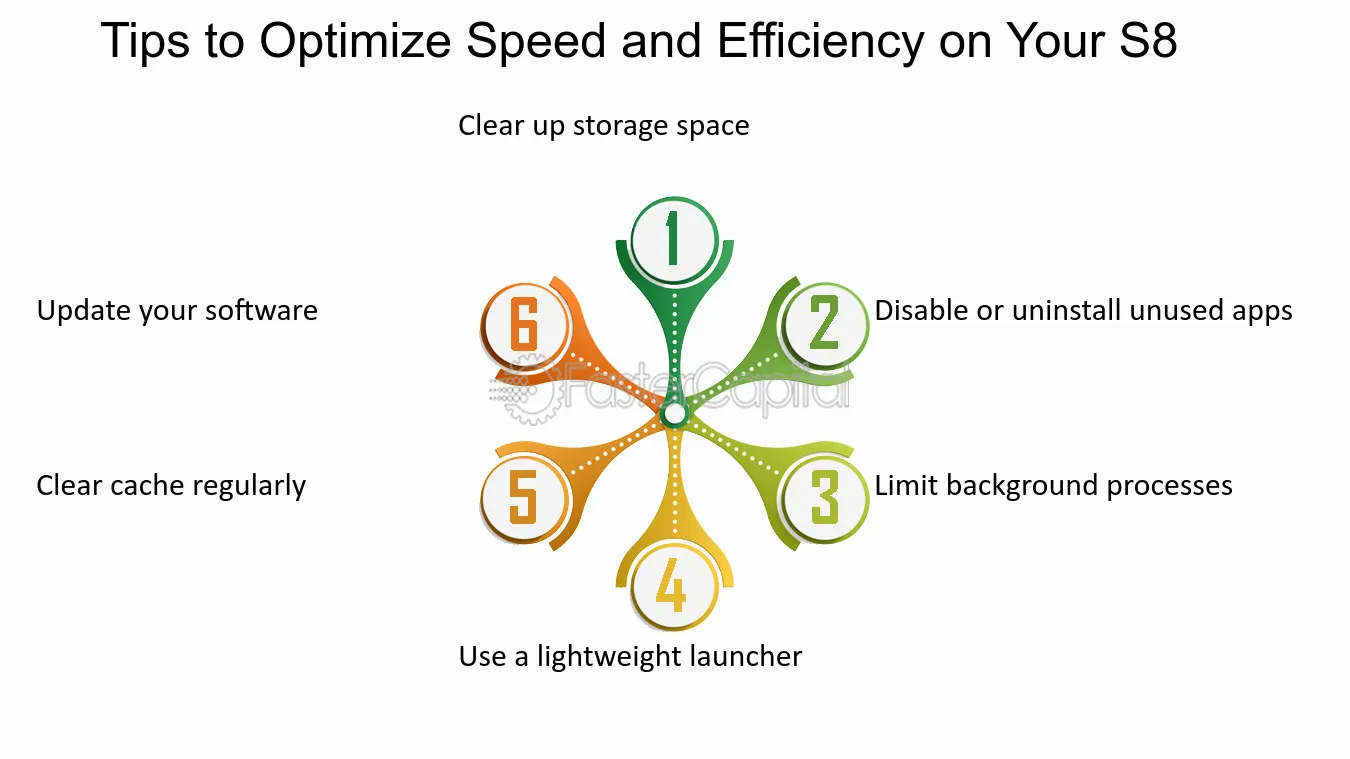
Tips to Optimize Speed and Efficiency on Your S8 - S8 Tips and Tricks: Getting the Most out of Your Device
22. Tips on How to Improve Website Speed and Efficiency
Slow website speed is one of the most frustrating things for both website visitors and owners. A slow website can lead to lost sales, frustrated customers, and a poor overall user experience.
There are many factors that can affect website speed, but there are some simple tips that can help you improve website speed and efficiency.
1. Use a content delivery network (CDN).
A CDN is a network of servers that deliver content to visitors based on their geographic location. Using a CDN can help improve website speed by reducing the distance that data has to travel.
2. Optimize images.
Images can often be the largest files on a web page, which can slow down loading times. Optimizing images can help reduce file size without compromising quality.
3. Minimize HTTP requests.
Each time a visitor loads a web page, their browser sends an HTTP request to the server. The more requests a page makes, the longer it will take to load. Minimizing HTTP requests can help improve website speed.
4. Use caching.
Caching helps improve website speed by storing frequently accessed files locally on the visitor’s computer. This means that the files don’t have to be downloaded from the server each time the page is loaded, which can speed up loading times.
5. Minimize code.
The amount of code on a web page can also affect loading times. Minimizing code can help improve website speed by reducing the amount of data that needs to be downloaded.
6. Use a faster hosting provider.
Your hosting provider can also affect website speed. If you’re using a shared hosting plan, consider upgrading to a faster plan, such as a virtual private server (VPS) or dedicated server. This can help improve website speed by giving your site its own resources and eliminating competition for resources from other sites on the same server.
7. Implement browser caching.
Browser caching can help improve website speed by storing static files locally on the visitor’s computer. This means that the files don’t have to be downloaded from the server each time the page is loaded, which can speed up loading times.
8. Reduce redirects.
Redirects can add unnecessary time to page loading times. If possible, reduce or eliminate redirects to help improve website speed.
9. Optimize your database.
If your website uses a database, such as MySQL, optimizing the database can help improve website speed. Database optimization can help reduce the amount of time needed to retrieve data from the database and can help improve overall site performance.
10. Use a faster server.
If you have the budget, upgrading to a faster server can help improve website speed. A faster server can provide your site with its own resources and can eliminate competition for resources from other sites on the same server. This can lead to faster loading times for your site.
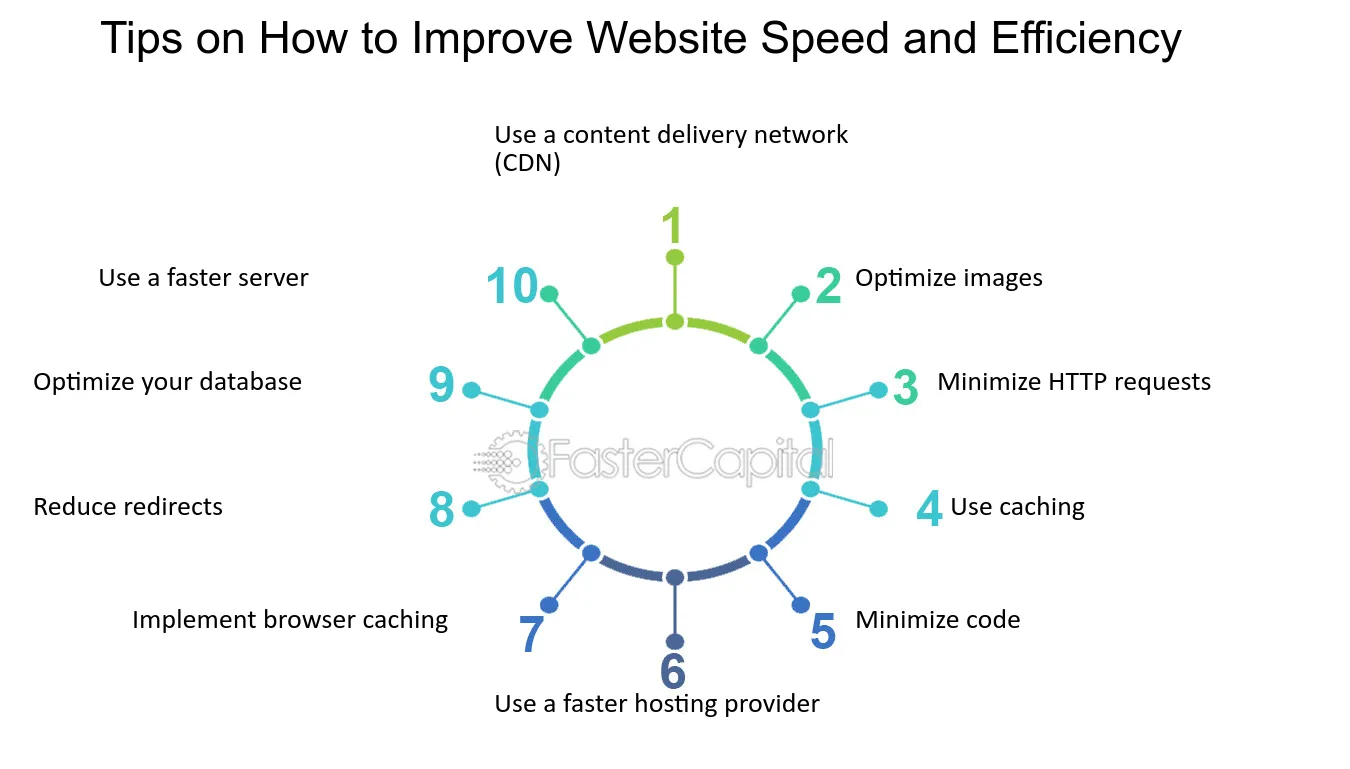
Tips on How to Improve Website Speed and Efficiency - Simple Steps To Optimize And Measure Your Website's SEO
23. Speed and Efficiency
One of the primary advantages of automated underwriting is the significant improvement in speed and efficiency compared to traditional manual underwriting processes. By automating the evaluation of loan applications, lenders can process a vast number of applications within seconds or minutes, significantly reducing the time it takes to make a lending decision.
The speed and efficiency of automated underwriting can be particularly beneficial in situations where borrowers require immediate access to funds. For example, in emergency situations or when time is of the essence, automated underwriting can provide a quick lending decision, enabling borrowers to address their financial needs promptly.
Additionally, the automation of the underwriting process eliminates the need for manual data entry and paperwork. As a result, lenders can save valuable time and resources that were previously consumed by administrative tasks, allowing them to redirect their efforts towards more critical aspects of the lending process.
Boost your sales rate and conversion rate
FasterCapital's sales team works with you on developing your sales strategy and improves your sales performance
24. Speed, Efficiency, and Transparency
In recent years, electronic trading has become increasingly popular due to its many advantages over traditional trading methods. With the use of electronic trading platforms, traders can now execute trades faster, more efficiently, and with greater transparency than ever before. In this section, we will discuss the advantages of electronic trading in detail and explore how it has revolutionized the world of finance.
1. Speed
One of the most significant advantages of electronic trading is its speed. With electronic trading platforms, traders can execute trades in a matter of seconds, compared to traditional trading methods, which can take minutes or even hours to complete. This speed allows traders to take advantage of market opportunities as they arise, maximizing their profits and minimizing their risks.
2. Efficiency
Electronic trading is also highly efficient, allowing traders to execute trades with minimal human intervention. This means that trades can be executed quickly and accurately, without the need for manual input or intervention. Additionally, electronic trading platforms can handle large volumes of trades simultaneously, making it possible for traders to execute multiple trades at once.
3. Transparency
Another advantage of electronic trading is its transparency. Electronic trading platforms provide traders with real-time market data, allowing them to make informed decisions about their trades. Additionally, electronic trading platforms provide traders with access to historical data, allowing them to analyze market trends and make predictions about future market movements.
4. Comparison to Traditional Trading Methods
When compared to traditional trading methods, electronic trading clearly has many advantages. Traditional trading methods often involve a great deal of manual input, which can lead to errors and delays. Additionally, traditional trading methods can be time-consuming and inefficient, making it difficult for traders to execute trades quickly and accurately.
5. Examples
One example of the advantages of electronic trading can be seen in the world of high-frequency trading. High-frequency trading firms use sophisticated algorithms and advanced computer systems to execute trades at lightning-fast speeds, taking advantage of even the smallest market movements. Another example can be seen in the world of foreign exchange trading, where electronic trading platforms have revolutionized the way that currencies are bought and sold.
6. Best Option
Overall, electronic trading is clearly the best option for traders who want to execute trades quickly, efficiently, and with transparency. With the use of electronic trading platforms, traders can take advantage of market opportunities as they arise, maximizing their profits and minimizing their risks. Additionally, electronic trading platforms provide traders with real-time market data, allowing them to make informed decisions about their trades.
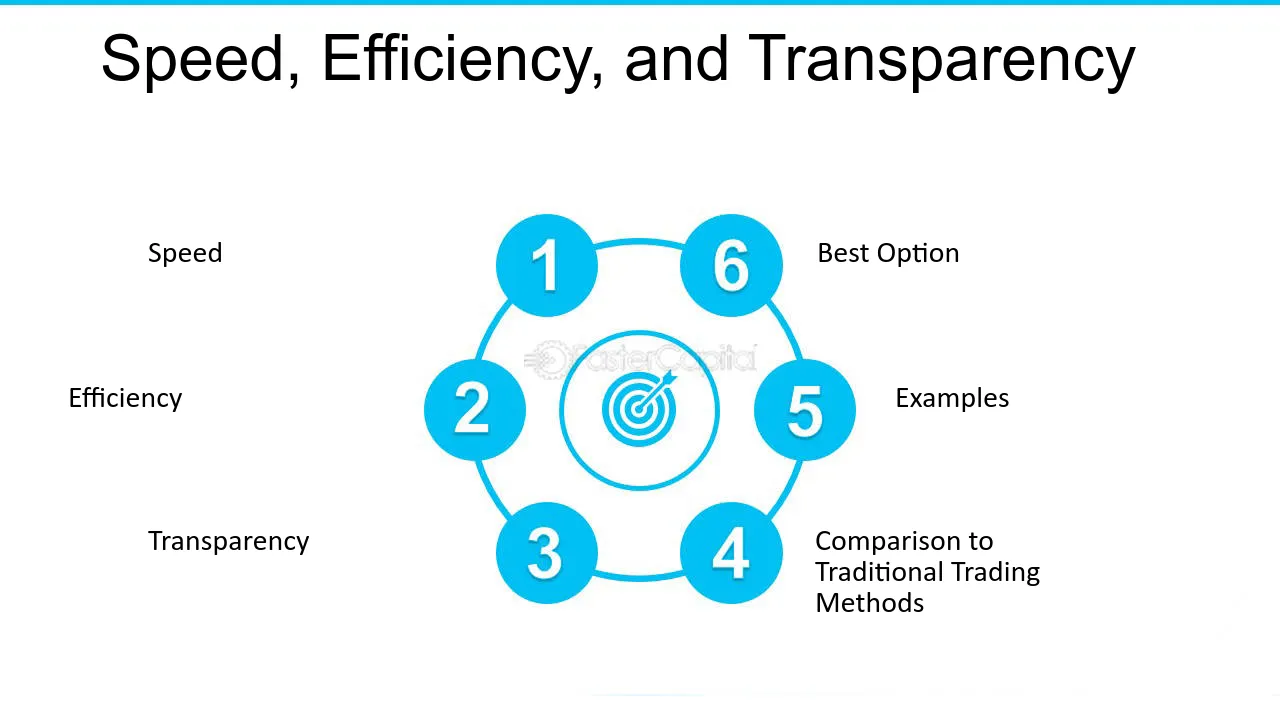
Speed, Efficiency, and Transparency - The Digital Frontier: Exploring Electronic Trading Houses
25. Speed, Efficiency, and Security
In today's digital age, where convenience and efficiency are paramount, the evolution of payment systems has played a pivotal role in reshaping the way we conduct financial transactions. One such innovation that has revolutionized the financial landscape is CHIPS (Clearing House Interbank Payments System). As a digital alternative to paper checks and traditional banking methods, CHIPS offers a myriad of advantages that have made it a preferred choice for businesses and individuals alike. In this section, we will delve into the three key advantages of CHIPS: speed, efficiency, and security.
1. Speed:
One of the most significant advantages of CHIPS is its unparalleled speed in processing transactions. Unlike traditional paper checks, which can take days or even weeks to clear, CHIPS enables near-instantaneous transfers of funds between participating banks. This rapid processing time is of immense value for businesses that require immediate access to funds or individuals who need to make time-sensitive payments. For instance, consider a scenario where a company needs to pay its suppliers promptly to secure crucial inventory. With CHIPS, the payment can be processed swiftly, ensuring that the company maintains a seamless supply chain and avoids any disruptions.
2. Efficiency:
CHIPS offers a level of efficiency that surpasses traditional payment methods. By eliminating the need for physical checks and manual processing, CHIPS streamlines the payment process, saving both time and resources. With CHIPS, businesses can automate their payment systems, reducing the administrative burden associated with manual check writing, mailing, and reconciliation. This automation not only improves operational efficiency but also minimizes the risk of errors that can occur during manual processing. Moreover, CHIPS allows for batch processing, enabling businesses to initiate multiple transactions simultaneously, further enhancing efficiency and productivity.
3. Security:
In an era where cyber threats loom large, security is a paramount concern for financial transactions. CHIPS addresses this concern by incorporating robust security measures to safeguard sensitive financial data. Transactions carried out through CHIPS are encrypted, ensuring that personal and financial information remains protected from unauthorized access. Additionally, CHIPS operates within a secure network, with stringent authentication protocols in place to verify the identity of participating banks and prevent fraudulent activities. This heightened level of security instills confidence in users, assuring them that their financial transactions are conducted in a safe and secure environment.
4. Reduced Costs:
While not explicitly mentioned in the section's title, it is worth highlighting the cost-saving benefits of CHIPS. By eliminating the need for physical checks, CHIPS eliminates the costs associated with check printing, postage, and manual processing. Businesses can also avoid potential fees charged by banks for processing paper checks. Additionally, the automation and efficiency provided by CHIPS reduce the need for manual intervention and administrative tasks, freeing up resources that can be allocated to other critical areas of the business. These cost savings make CHIPS an attractive choice for businesses looking to streamline their payment processes and improve their bottom line.
The advantages offered by CHIPS in terms of speed, efficiency, security, and cost savings make it a game-changer in the world of financial transactions. As businesses and individuals continue to embrace digital solutions, the evolution of CHIPS from paper checks to digital transactions has undoubtedly transformed the way we conduct our financial affairs. With its ability to process transactions swiftly, streamline payment processes, enhance security, and reduce costs, CHIPS has become an indispensable tool in the modern financial landscape.
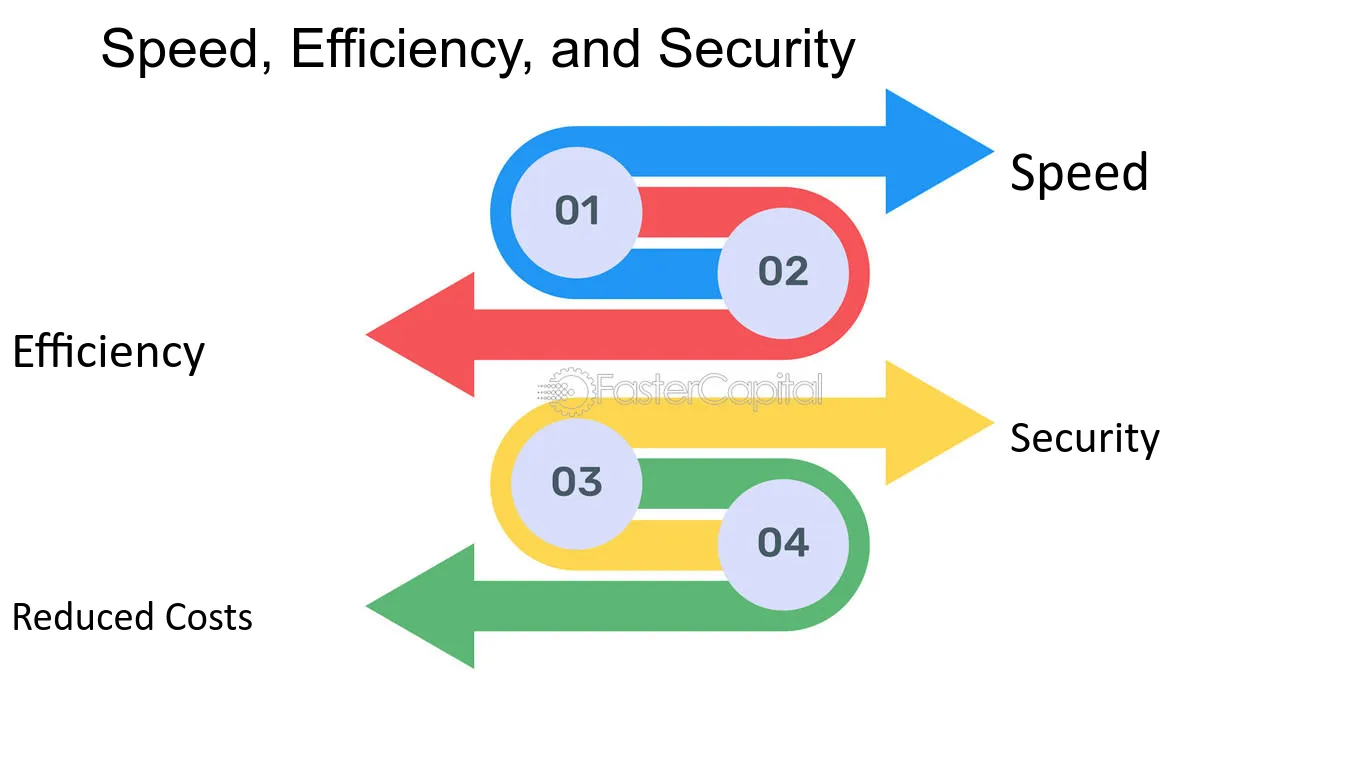
Speed, Efficiency, and Security - The Evolution of CHIPS: From Paper Checks to Digital Transactions
26. Speed, Efficiency, and Accurate Limit Order Execution
In today's fast-paced financial markets, speed is of the utmost importance. Traders and investors rely on quick and efficient execution of their orders to take advantage of market opportunities and maximize their profits. This is where MatchedBook, a cutting-edge trading platform, comes into play. With its advanced technology and innovative features, MatchedBook offers a range of benefits that make it an indispensable tool for traders seeking instant execution of their limit orders.
1. Speed: One of the most significant advantages of MatchedBook is its lightning-fast execution speed. The platform leverages high-performance technology and a robust infrastructure to ensure that orders are matched and executed in real-time. This means that traders can enter and exit positions swiftly, taking advantage of even the smallest price movements. For example, imagine a trader who spots a golden opportunity to buy a stock at a specific price. With MatchedBook's speed, the trader can submit a limit order and have it executed almost instantly, ensuring they don't miss out on the opportunity.
2. Efficiency: MatchedBook is designed to streamline the trading process and eliminate unnecessary delays or complications. The platform offers a user-friendly interface that allows traders to easily input their limit orders and monitor their execution status. Moreover, MatchedBook's smart order routing system ensures that orders are automatically sent to the most suitable liquidity providers, optimizing the chances of execution. This efficiency not only saves traders valuable time but also reduces the likelihood of missed trading opportunities. For instance, a trader who wishes to sell a large block of shares can rely on MatchedBook to efficiently match their order with multiple buyers, ensuring a smooth and timely execution.
3. Accurate Limit Order Execution: Accuracy is crucial in limit order execution, as traders rely on the platform to execute their orders at the specified price or better. MatchedBook's advanced matching engine ensures precise execution, minimizing slippage and maximizing price improvement opportunities for traders. The platform employs sophisticated algorithms to match buy and sell orders based on price, quantity, and other criteria, resulting in accurate and fair execution. This accuracy is particularly beneficial for traders who employ specific trading strategies that rely on precise price execution. For example, a day trader who utilizes a scalping strategy can trust MatchedBook to execute their limit orders accurately, enabling them to profit from small price differentials.
4. Enhanced Market Depth: MatchedBook provides traders with access to a deep pool of liquidity from multiple sources, including exchanges, market makers, and other participants. This extensive market depth ensures that traders have a higher probability of finding a counterparty to match their limit orders, even during periods of high volatility. By accessing a broader pool of liquidity, traders can enjoy tighter bid-ask spreads and reduced trading costs. This benefit is particularly advantageous for institutional traders or those dealing with large order sizes, as they can execute their orders without significantly impacting the market price.
MatchedBook offers a multitude of benefits that make it an invaluable tool for traders seeking instant execution of their limit orders. Its speed, efficiency, accurate limit order execution, and enhanced market depth provide traders with the necessary tools to navigate the fast-paced financial markets effectively. Whether you are a day trader looking to capitalize on short-term price movements or a long-term investor seeking optimal order execution, MatchedBook's advanced features make it a powerful ally in achieving your trading goals.
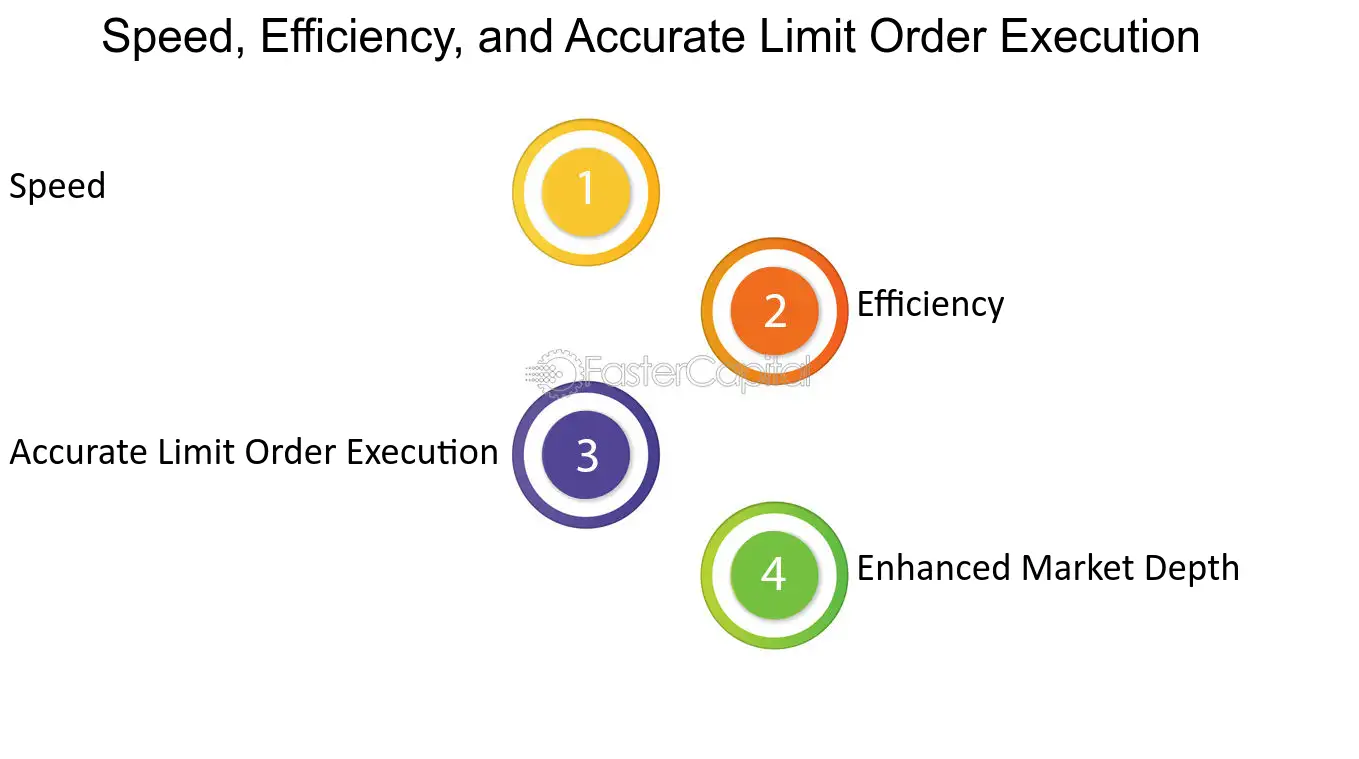
Speed, Efficiency, and Accurate Limit Order Execution - The Power of MatchedBook in Executing Limit Orders Instantly
27. Speed and Efficiency
One of the biggest advantages of conducting market research online is the speed and efficiency it offers. Traditional methods of market research, such as in-person interviews and surveys, can be time-consuming and labor-intensive. With online research, however, businesses can gather data and insights much more quickly and efficiently. Here are a few reasons why speed and efficiency are essential in market research, along with some tips and examples to maximize these benefits:
1. Rapid data collection: Online surveys and questionnaires can be distributed to a large number of participants simultaneously, allowing for a swift collection of data. This eliminates the need for manual data entry and reduces the chances of errors that may occur during the transcription process. For instance, a clothing retailer looking to launch a new line of products can quickly gather feedback from its target audience through an online survey, helping them make informed decisions within a shorter timeframe.
2. real-time insights: Online market research tools enable businesses to collect data in real-time. This means that companies can access and analyze the results as soon as they are available. Real-time insights are particularly valuable when it comes to tracking consumer trends and preferences, as they allow businesses to stay ahead of the competition. For example, a tech company can monitor online forums and social media platforms to gauge customer sentiment about their latest product, and make necessary adjustments based on the feedback received.
3. Cost-effectiveness: Online market research often proves to be more cost-effective than traditional methods. Conducting surveys, interviews, or focus groups online eliminates the need for travel expenses and venue rentals. Additionally, online surveys can be created and distributed at a fraction of the cost of printing and mailing paper surveys. This cost-effectiveness allows businesses, especially smaller ones with limited budgets, to conduct more extensive research and gather a larger sample size within their financial means.
4. Enhanced targeting capabilities: Online research provides businesses with the ability to target specific demographics or customer segments more accurately. Online platforms offer various targeting options, such as age, location, interests, and purchasing behavior, allowing businesses to reach their ideal audience quickly. This level of specificity ensures that the data collected is more relevant, leading to more accurate insights. For instance, a food delivery service can target individuals within a specific radius of their delivery zone, ensuring that the feedback received is from potential customers in their target market.
In conclusion, the speed and efficiency of conducting market research online provide numerous advantages for businesses. Rapid data collection, real-time insights, cost-effectiveness, and enhanced targeting capabilities are just a few of the benefits that online research offers. By leveraging these advantages, companies can gather valuable data quickly and make informed decisions that drive their business growth.
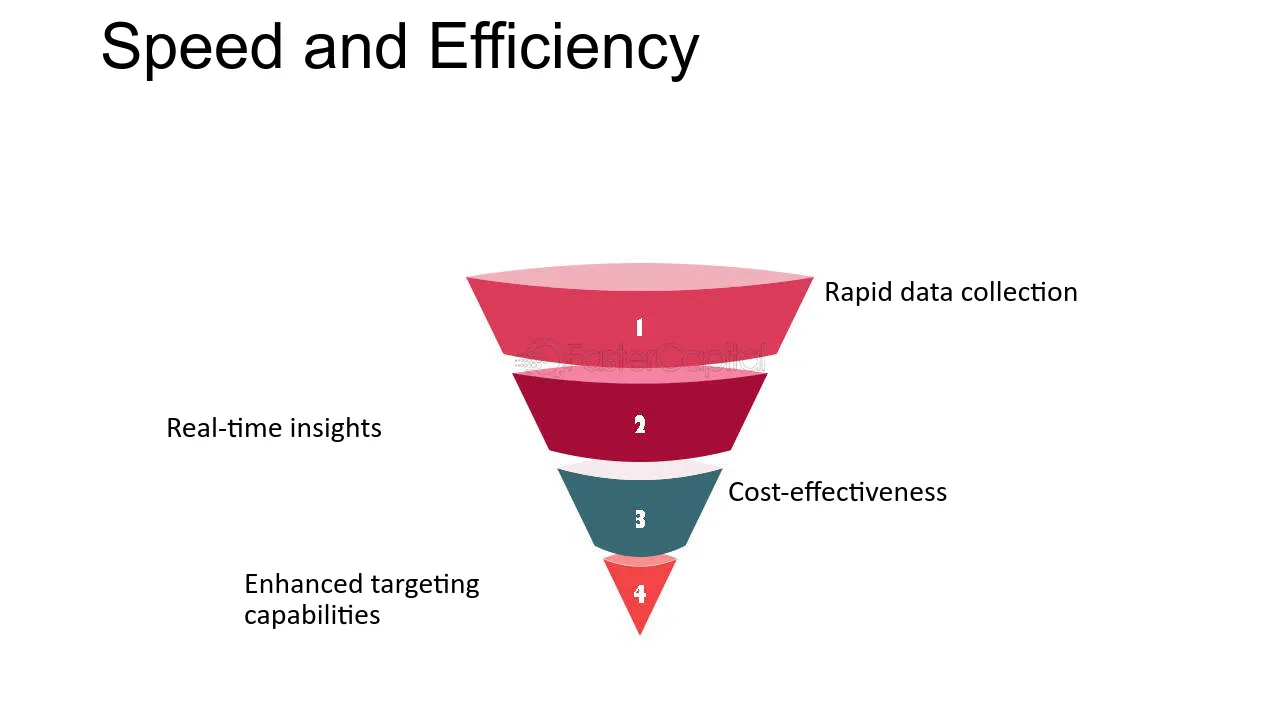
Speed and Efficiency - The Pros and Cons of Conducting Market Research Online
28. Speed and Efficiency of Online Market Research Surveys
One of the major advantages of conducting market research surveys online is the speed and efficiency it offers. Traditional methods of data collection, such as face-to-face interviews or phone surveys, can be time-consuming and costly. On the other hand, online surveys can reach a large number of respondents quickly and efficiently, allowing businesses to gather valuable insights in a short amount of time. Here are a few reasons why speed and efficiency are key benefits of online market research surveys:
1. Faster data collection: With online surveys, businesses can collect data much faster compared to traditional methods. Once the survey is created and distributed, respondents can complete it at their convenience, eliminating the need for scheduling appointments or phone calls. This not only saves time but also reduces the chances of missing out on potential respondents due to scheduling conflicts.
Example: A clothing retailer wants to launch a new line of products, but they need to gather feedback from their target audience before finalizing the designs. By conducting an online survey, they can reach a large number of potential customers within a short period, allowing them to collect feedback quickly and make informed decisions about their product line.
2. Real-time data analysis: Online surveys provide businesses with the advantage of real-time data analysis. As responses are collected, the data can be automatically processed and analyzed, providing instant insights. This allows businesses to make timely decisions and adapt their strategies based on the feedback received.
Example: A technology company is planning to introduce a new feature in their software product. They conduct an online survey to gauge customer interest and gather feedback. By analyzing the responses in real-time, they discover that a significant portion of their target audience is not interested in the feature. This prompts them to reevaluate their plans and allocate resources to areas that will have a higher impact on customer satisfaction.
Tips for ensuring speed and efficiency in online market research surveys:
- Keep the survey concise: Long and complex surveys can discourage respondents from completing them, resulting in lower response rates. Keep the survey questions focused and limit the number of questions to ensure maximum participation.
- Utilize skip logic: Skip logic allows you to customize the survey experience based on respondents' answers. By skipping irrelevant questions, you can streamline the survey and make it more efficient, leading to faster completion rates.
- Leverage panel providers: Partnering with panel providers can help you reach a wide range of respondents quickly. These providers have pre-screened panels of individuals who are willing to participate in surveys, saving you time and effort in finding suitable participants.
Case study: A food delivery service wants to understand customer satisfaction levels and identify areas for improvement. They decide to conduct an online survey using a panel provider to gather feedback from their customers. By leveraging the panel provider's database, they are able to reach a large number of customers within a few days, allowing them to analyze the data and take necessary actions promptly.
In conclusion, the speed and efficiency of online market research surveys make them a valuable tool for businesses seeking to gather insights quickly and make data-driven decisions. By utilizing the advantages of online surveys, businesses can save time, reach a wider audience, and obtain real-time feedback to stay ahead in today's fast-paced market.
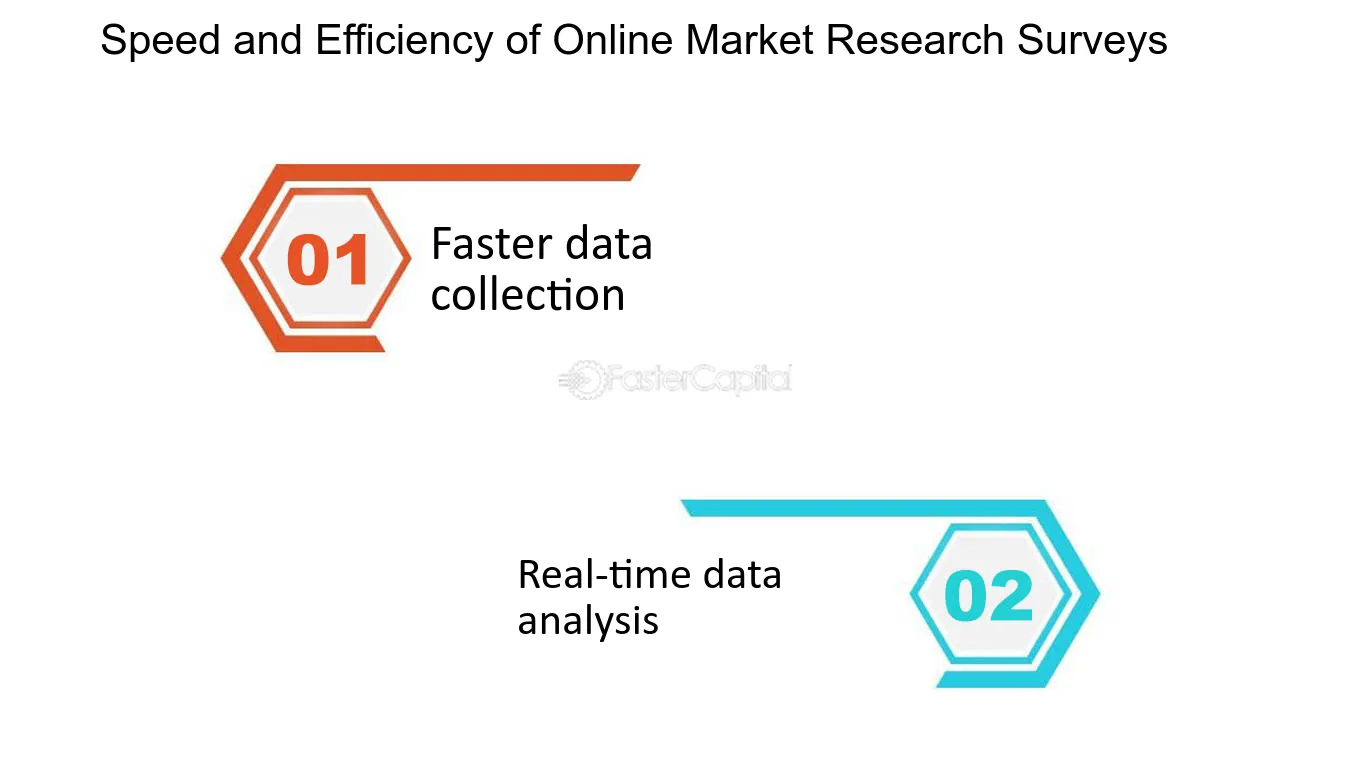
Speed and Efficiency of Online Market Research Surveys - The Pros and Cons of Conducting Market Research Surveys Online
29. Speed, Efficiency, and Profitability
High-frequency trading (HFT) has become increasingly popular among traders in recent years. This is due to the advantages it offers, including speed, efficiency, and profitability. Speed is a key factor in HFT, with trades executed in milliseconds or even microseconds. This is made possible by the use of advanced algorithms and computer systems that can analyze vast amounts of data in real-time. With this speed, HFT traders can take advantage of market movements before others can react. In addition, HFT is highly efficient, allowing for the execution of large volumes of trades with minimal human intervention. This reduces the potential for errors and frees up traders to focus on other tasks.
There are several advantages of HFT that are worth exploring in more detail:
1. Speed: As mentioned, speed is a crucial factor in HFT. By using advanced algorithms and computer systems, HFT traders can execute trades in milliseconds or microseconds. This allows them to take advantage of even the smallest market movements before others have a chance to react. For example, if a stock price suddenly drops, an HFT trader can quickly sell their shares before the price falls further. This can result in significant profits, especially when multiplied across multiple trades.
2. Efficiency: HFT is highly efficient, with trades executed automatically by computer systems. This reduces the potential for errors caused by human intervention and frees up traders to focus on other tasks. In addition, HFT can handle large volumes of trades with ease, allowing traders to take advantage of multiple opportunities simultaneously. This can result in higher profits and a more diversified portfolio.
3. Profitability: HFT can be highly profitable for traders who know how to use it effectively. By taking advantage of small market movements, HFT traders can generate significant profits over time. For example, if an HFT trader makes a profit of just a few cents per trade, this can add up to a substantial amount when multiplied across thousands or even millions of trades.
Overall, the advantages of HFT make it an attractive option for traders who are looking to generate profits quickly and efficiently. However, it is important to remember that HFT comes with its own set of risks, including technical glitches and market volatility. Traders who are considering HFT should carefully weigh the potential benefits and risks before getting started.
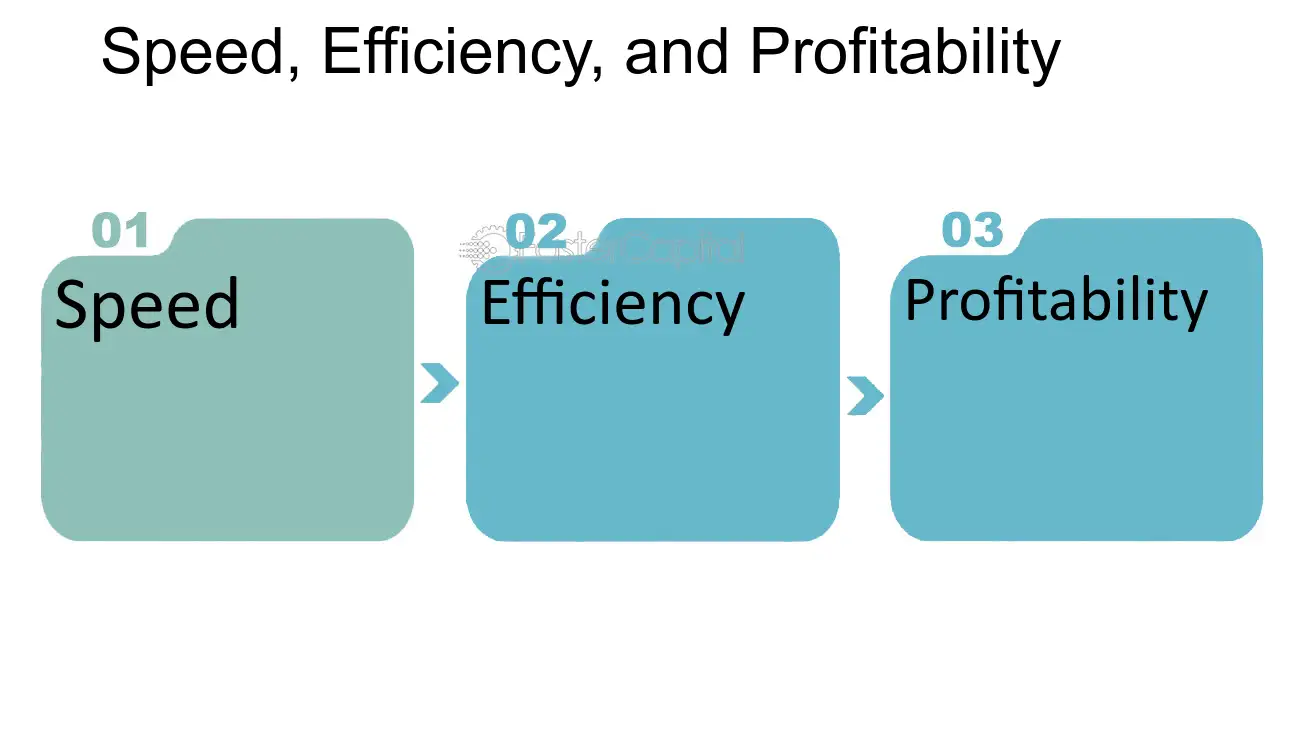
Speed, Efficiency, and Profitability - The Rise of High Frequency Trading on Modern Trading Floors
30. The Speed and Efficiency of Algorithmic Trading during Market Stress
During periods of market stress, such as the infamous "Taper Tantrum" of 2013, algorithmic trading has often been blamed for exacerbating the volatility and amplifying the market movements. While algorithmic trading undoubtedly plays a significant role in today's financial markets, it is essential to delve deeper into the subject and explore the speed and efficiency of algorithmic trading during these periods. By examining different perspectives, we can gain a more comprehensive understanding of how algorithmic trading affects market stress and volatility.
1. Algorithmic Trading: A Catalyst for Market Stress?
One viewpoint suggests that algorithmic trading can act as a catalyst for market stress. The lightning-fast speed at which algorithms execute trades can cause a cascade effect, leading to rapid price movements and increased volatility. For example, during the Taper Tantrum, algorithmic trading algorithms responded to the news of potential tapering of the Federal Reserve's bond-buying program by rapidly selling off assets. This sudden surge in selling pressure intensified the market downturn, causing panic among investors.
2. Algorithmic Trading: A Stabilizing Force
Contrary to the belief that algorithmic trading exacerbates market stress, another perspective argues that it can actually act as a stabilizing force during turbulent times. Algorithmic trading systems are designed to react swiftly to market signals and execute trades accordingly. This speed allows algorithms to identify and exploit market inefficiencies promptly. During periods of extreme volatility, algorithmic trading algorithms can help restore equilibrium by quickly adjusting positions and absorbing liquidity imbalances.
3. The Role of Liquidity Providers
One crucial aspect of algorithmic trading during market stress is the role of liquidity providers. These market participants actively provide liquidity by placing bid and ask orders in the market. Algorithmic trading algorithms can act as liquidity providers, stepping in to absorb excess selling pressure or provide much-needed liquidity during periods of heightened stress. By doing so, algorithmic traders can mitigate the impact of market stress and prevent further price declines.
4. The Need for Robust Risk Management
To ensure the stability and efficiency of algorithmic trading during market stress, robust risk management measures are imperative. Algorithmic trading systems must have built-in risk controls and mechanisms to manage and mitigate potential risks. For instance, setting circuit breakers or implementing position limits can help prevent algorithmic trading algorithms from exacerbating market stress by imposing constraints on their trading activities.
5. The Importance of Human Oversight
While algorithmic trading systems are designed to operate autonomously, human oversight remains crucial, especially during periods of market stress. Human traders can intervene and modify algorithmic strategies if they perceive excessive volatility or potential risks. This human touch provides an added layer of control and ensures that algorithmic trading remains aligned with overall market conditions and objectives.
6. The Evolution of Algorithmic Trading
It is important to note that algorithmic trading has evolved significantly over the years, incorporating lessons learned from previous market stress events. Today, algorithms are more sophisticated and incorporate risk management measures to address potential pitfalls. Additionally, regulatory bodies have implemented stricter oversight and surveillance measures to monitor algorithmic trading activity and ensure market stability.
The speed and efficiency of algorithmic trading during market stress can have both positive and negative impacts on market volatility. While algorithmic trading can exacerbate market stress in some cases, it can also act as a stabilizing force and provide liquidity during turbulent times. Robust risk management measures and human oversight are crucial to ensure the responsible use of algorithmic trading and prevent potential market disruptions. As algorithmic trading continues to evolve, it is essential to strike a balance between leveraging its benefits and mitigating its potential risks.
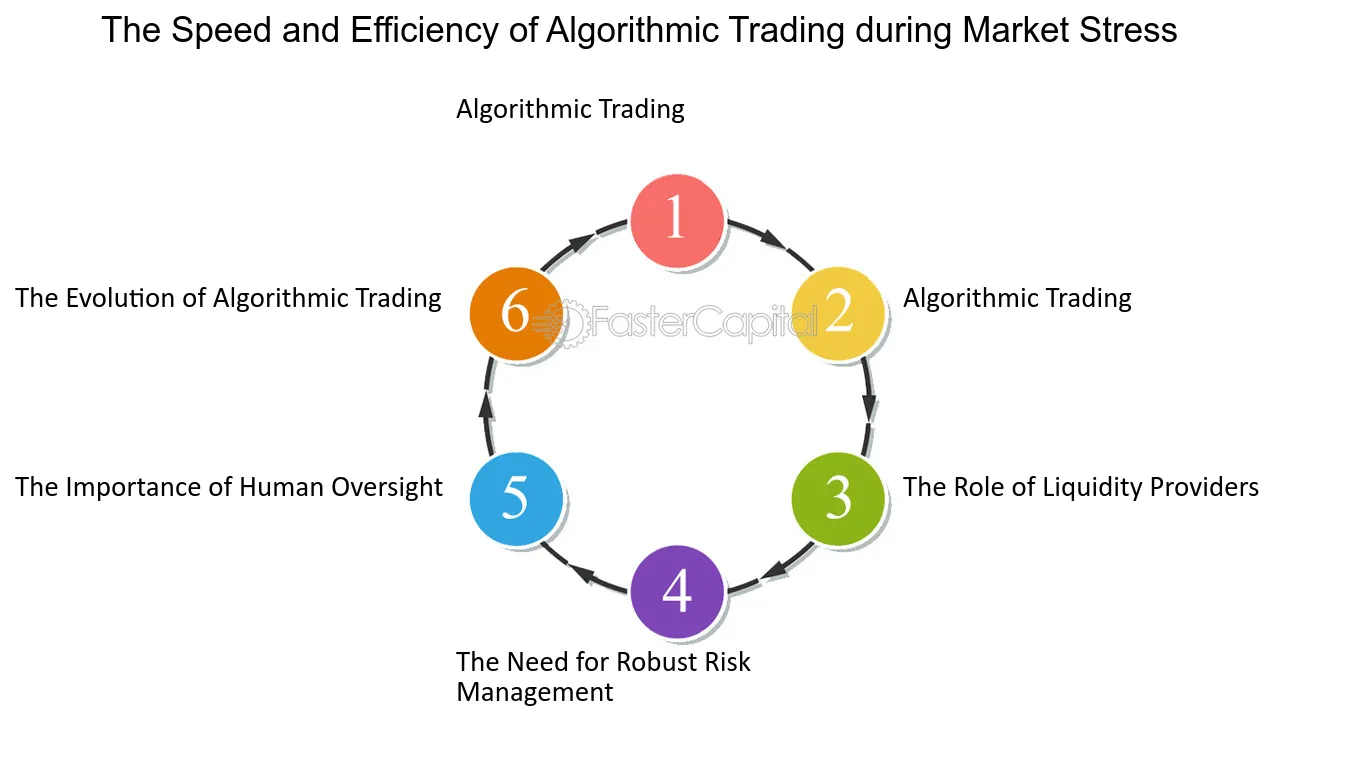
The Speed and Efficiency of Algorithmic Trading during Market Stress - The role of algorithmic trading in exacerbating the Taper Tantrum
31. A Comparison of Speed and Efficiency
1. Speed and Efficiency of the Abacus
When it comes to calculations, speed and efficiency are key factors that determine our productivity. In today's digital age, calculators have become the go-to tool for most of us. However, have you ever wondered if there is an alternative that can match or even surpass the speed and efficiency of a calculator? Enter the abacus, an ancient calculating device that has stood the test of time.
2. The Speed Advantage of the Abacus
One of the main advantages of using an abacus is its remarkable speed. While a calculator requires the user to press buttons and wait for the device to process the input, an abacus allows for instantaneous calculations. The skilled abacus user can perform complex calculations with lightning-fast speed, often outpacing the calculator. For example, multiplying two 4-digit numbers on a calculator might take a few seconds, whereas an abacus user can achieve the same result in a matter of seconds.
3. The Efficiency of the Abacus
Not only is the abacus fast, but it is also highly efficient in terms of memory usage and mental workload. With a calculator, you need to remember the numbers you have inputted, the operations you have performed, and the intermediate results. On the other hand, the abacus eliminates the need for mental storage as the physical beads on the device represent numbers and calculations. This allows the user to focus solely on the calculations at hand, resulting in improved accuracy and reduced mental strain.
4. Real-Life Case Studies
To truly understand the speed and efficiency of the abacus, let's take a look at some real-life case studies. In a study conducted at a Japanese elementary school, students who were trained in abacus calculations consistently outperformed their peers who solely relied on calculators. These abacus-trained students were not only faster in completing calculations but also exhibited better problem-solving skills and mathematical understanding.
5. Tips for Turbocharging Your Calculation Speed
If you're interested in harnessing the power of the abacus to turbocharge your calculation speed, here are a few tips to get you started:
- Practice regularly: Like any skill, proficiency in abacus calculations comes with practice. Set aside dedicated time each day to hone your abacus skills and watch your speed soar.
- Learn advanced techniques: Once you've mastered the basics, explore advanced techniques such as mental abacus, where you imagine an abacus in your mind to perform calculations without the physical device.
- Seek guidance from experts: Joining an abacus training program or seeking guidance from experienced abacus users can greatly accelerate your learning process and help you unlock the full potential of the abacus.
While calculators have become an indispensable tool in our daily lives, the abacus offers a unique combination of speed and efficiency that can revolutionize the way we approach calculations. With its lightning-fast speed and reduced mental workload, the abacus is a powerful tool that can help us tackle complex calculations with ease. So why not give the ancient art of abacus calculations a try and see how it can turbocharge your calculation speed?
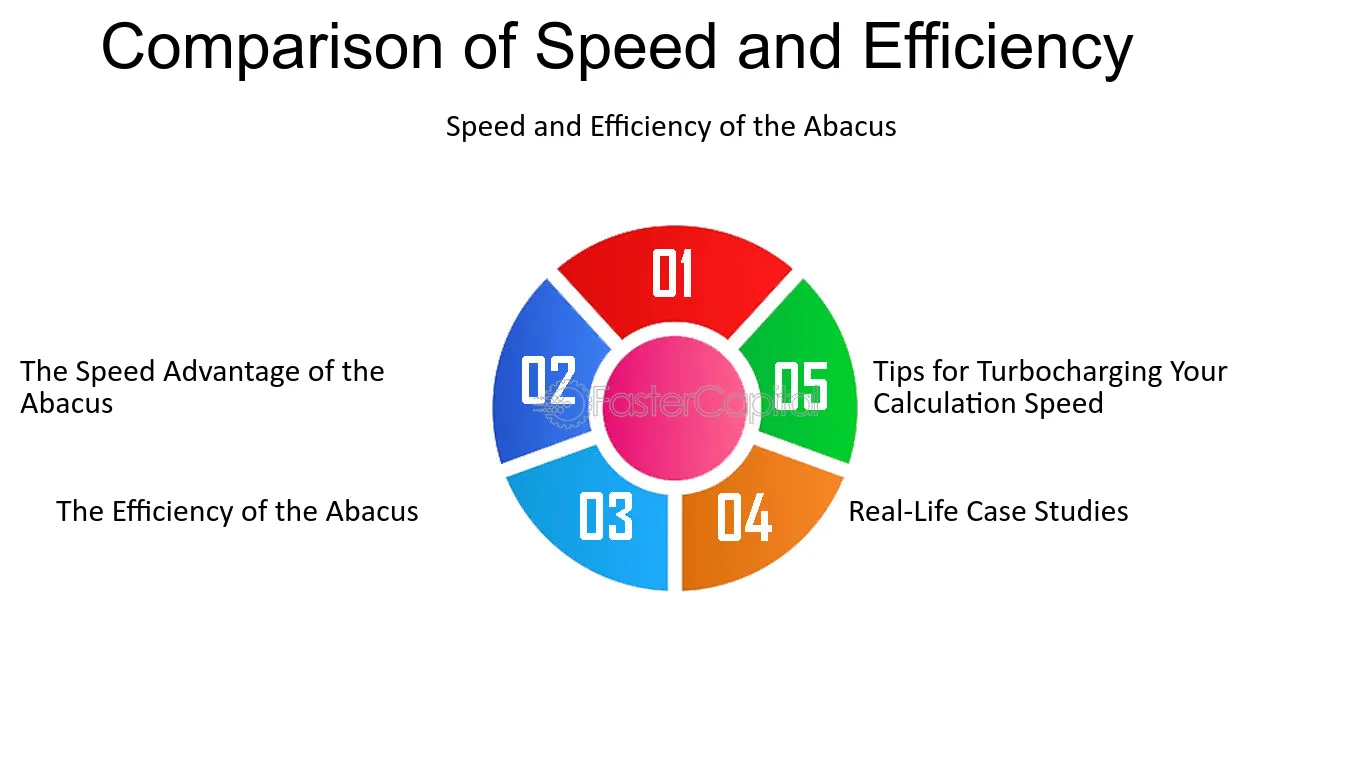
A Comparison of Speed and Efficiency - Turbocharge Your Calculation Speed with the Abacus